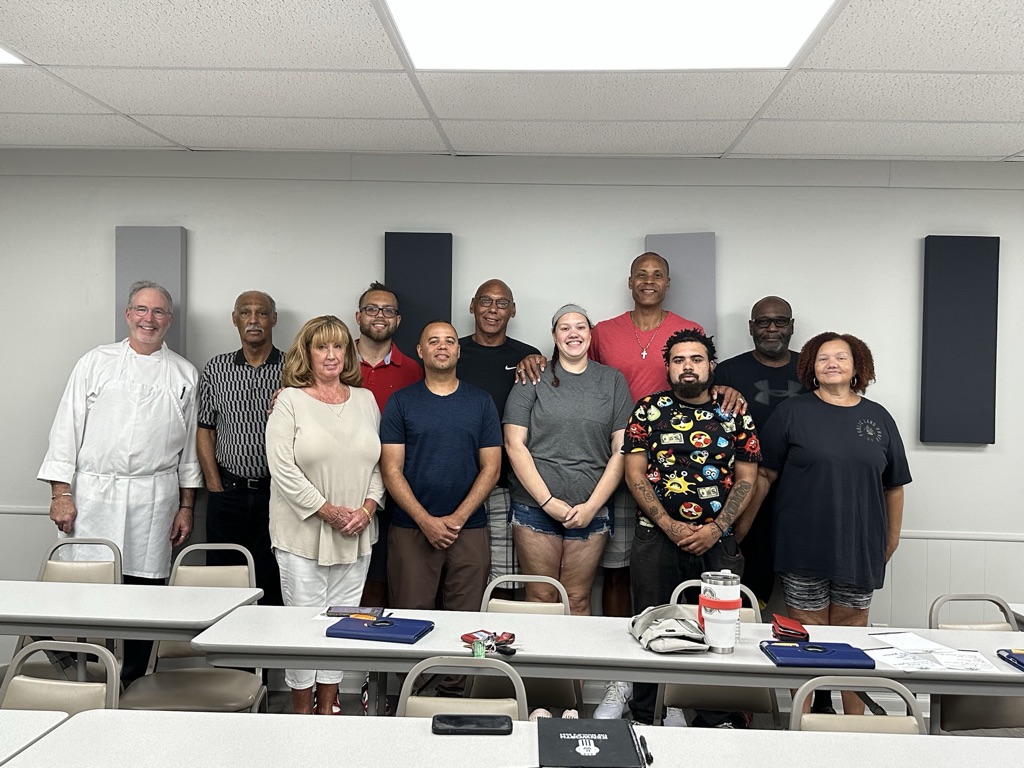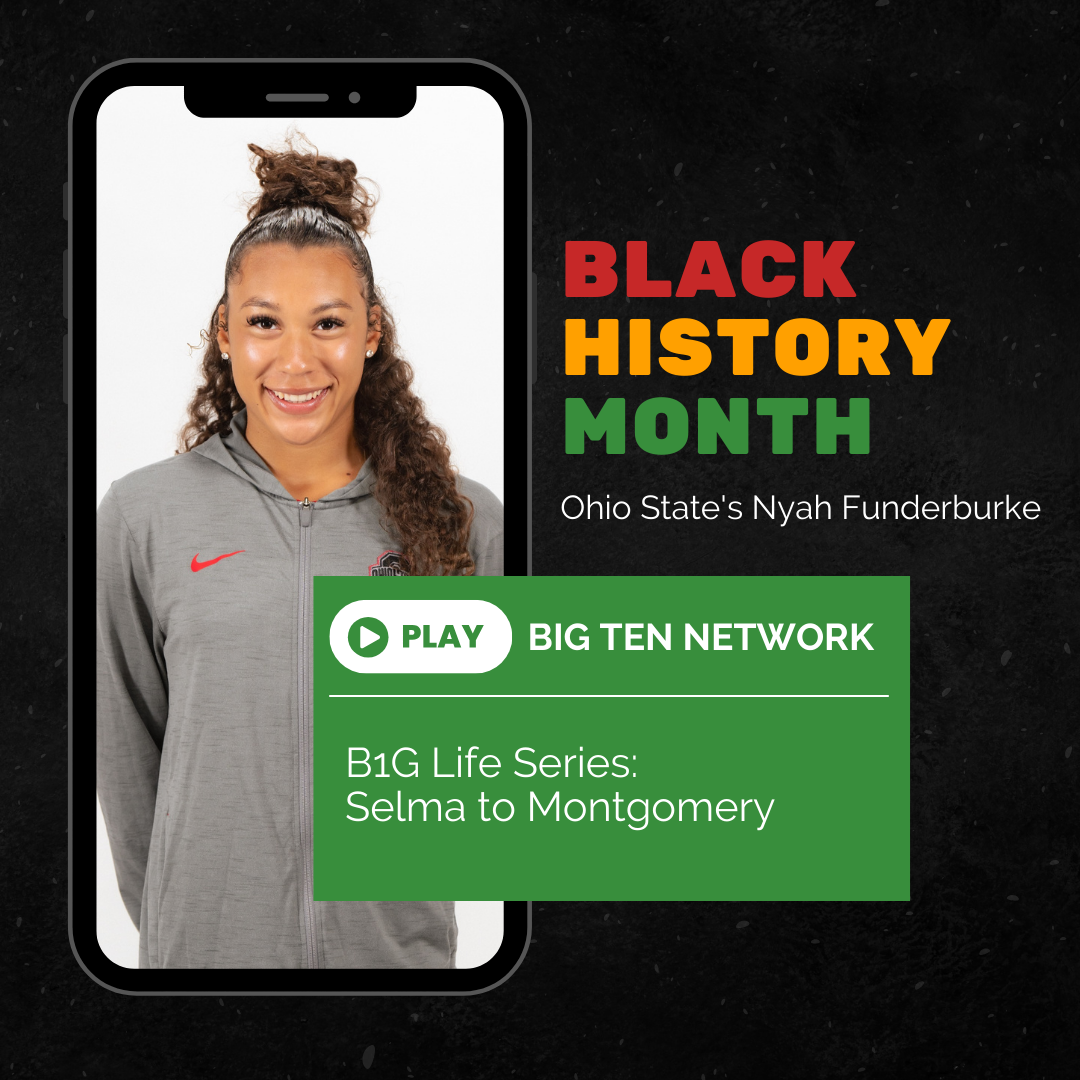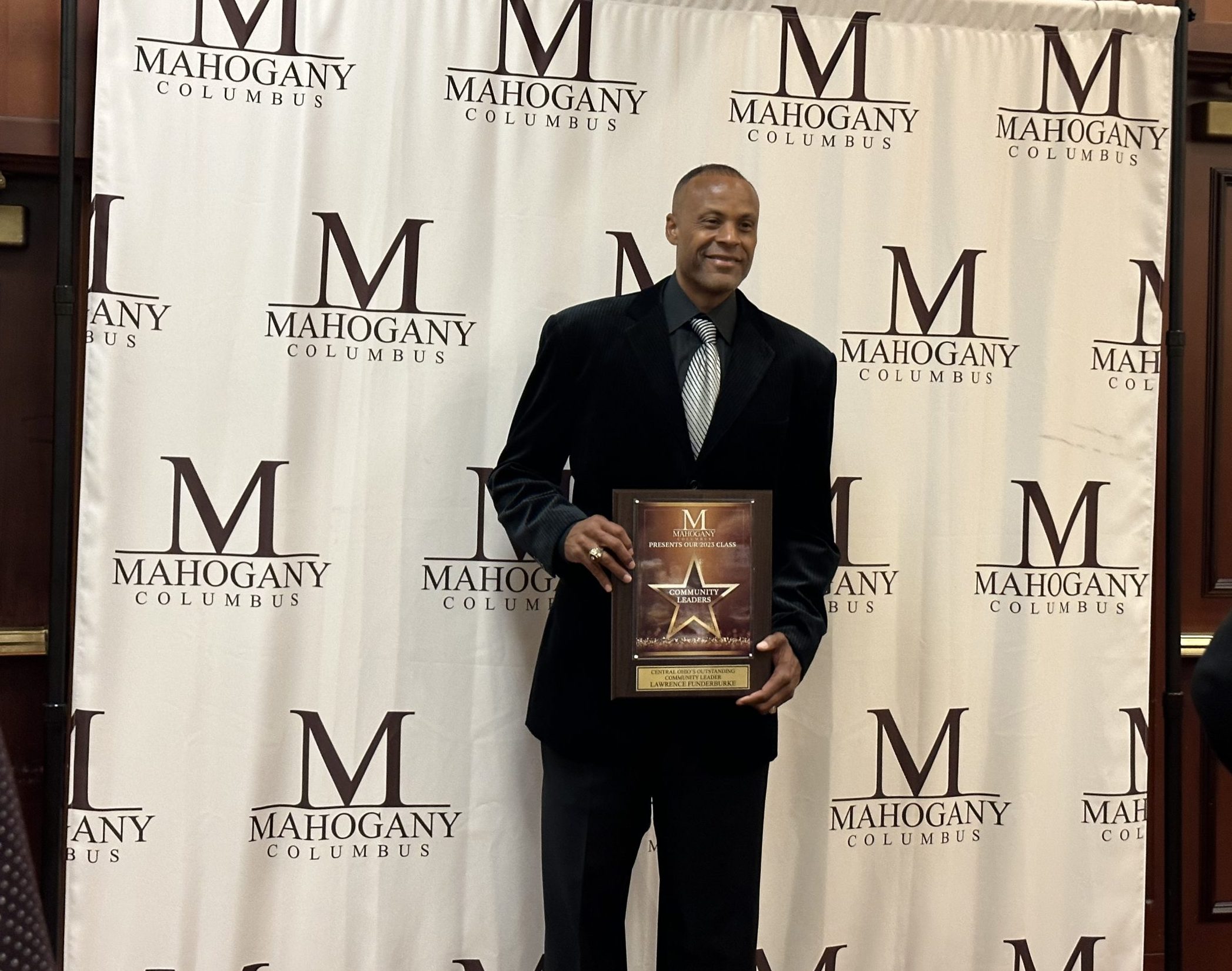LFYO 2024 Summer Programming

LFYO has teamed up with the GoodLife Foundation and Columbus Parks and Recreation to present several weeks of summer programming for area youth. For vulnerable populations, it’s critical to offer positive outlets since negativity permeates their tumultuous landscape. One thing is certain: We must keep our kids safe and out of harm’s way. Financial life skills not only improve favorable outcomes for at-risk youth, but they also serve as violence prevention measures. You see, the biggest difference between disadvantaged teens and their well-to-do peers comes down to opportunity. Successful careers, success templates, and success-oriented mindsets are par for the course in affluent (and even upper middle class) communities. And this is why their children have a distinct, modeling and networking advantage. That’s why LFYO serves as a bridge-building specialist to help level the playing field without settling a score. In other words, leveraging the three E’s of success is the key to closing the opportunity gap. Exposure. Experience. Expectation. Expose vulnerable participants to what can be, provide the tools or experience to achieve it, and watch what happens. The expectation to do better feeds itself when they’re fed a smorgasbord of real-world opportunities (which is a beautiful thing to behold when at-risk youth who once felt disempowered now value empowerment). This is how we change lives and transform legacies, one broken spirit and battered soul at a time.
I see myself as the modern-day version of Robin Hood. No, I don’t steal from the rich to give to the poor. What I do is borrow from the wealthy and well-connected to empower the less fortunate.
Thus far, we’ve taught underserved youth how to create (and protect) their personal brand, identify their unique life-and-flow fit, and improve their mental health status. Plus, the young ladies are treated like royalty. They are always served first when eating, and the fellas must hold the doors when females are entering and exiting every company we visit. Yes, we’re bringing back chivalry, and those who fail or forget to comply must do 25 (super-slow) pushups! In fact, young people can learn anything if it’s memorable, manageable, and marketable with (or to) their way of thinking. What’s memorable draws upon hope. What’s manageable provides the help. And what’s marketable fuels the hype, or what it takes to get them fired up about their promising future. As Cubbie Taylor remarked after hosting our group on a field trip to Midwest Photo, “This is the most impressive collection of young people that I’ve ever had the pleasure of working with, and I have hosted hundreds of children before.” Jason Moore, owner-operator of Autotool Inc., echoed this sentiment. Among other things, he highlighted, “Wow, what an amazing and articulate group of teenagers!” It’s not a capability issue with our most vulnerable, black-and-brown youth; it’s an accessibility problem. Take a look at the pictures, videos, and lineup of activities below …
Exposure
The state of being in an environment or situation where one is subjected to a particular agent, influence, or experience.
Experience
The practical knowledge, skill, or understanding that is gained through involvement in or exposure to a specific activity, event, or process.
Expectation
The standard or level of performance, behavior, or outcome that is envisioned or demanded in a particular situation based on previous experiences, knowledge, or assumptions..
Video Highlights
Please take a moment to view a brief video highlighting some of the key moments from our initial meetings with the participants.
2024 Fundraising Luncheon
The 2024 LFYO Fundraising Luncheon is just around the corner.
The Location
Hyde Park Prime Steakhouse (Downtown)
The Time
11:30 AM to 1:30 PM.
The Offering
A first-class experience at a five-star dining establishment while mixing and mingling with some of Central Ohio’s most prominent and influential people.

The Date
September 20, 2024
The Cause
To raise investment support for LFYO programs.
The Crowd
Business leaders, former Ohio State and ex-professional athletes, and philanthropic-minded individuals (like yourself) will be in attendance.
Thus far, we have 20 committed sponsors and 5 more left to secure. Might you or your company join this prestigious list? Don’t delay. If you or your company is interested in sponsoring or attending the event as an individual or couple, please email me at info@MrFundy.com. For more details on the 2024 LFYO Fundraising Luncheon, please click the link above.
In closing, we want to acknowledge our 2023 Legacy Sponsor, Maggie and Tom Fleming. Their generous contribution allowed LFYO to purchase 23 new iPads with bluetooth keyboards and protective cases. To the Flemings — and every LFYO investment supporter — thank you for helping us carve out our unique niche in changing lives and transforming legacies here in Central Ohio and beyond. Again, thank you.
The State of Mental Health for America's Youth
The State of Mental Health for America's Youth
Why They're Hurting, How We Can Help Them, and Where to Start First

Don’t be troubled by the length of this article; it’s a fast read about a very troubling subject. Brevity won’t do it justice.
A lot of young people are struggling in a major way, though few care to admit it. Their upstairs and downstairs brains are skipping floors. Upstairs deals primarily with the cerebral cortex, or what occupies roughly 80 percent of the top floor brain and nearly 100 billion neurons. Downstairs refers to the gastrointestinal tract, with approximately 100 million neurons occupying the bottom floor brain. Newbie minds with topsy-turvy bellies as well as rollercoaster hearts are in a state of flux. Whether mentally, emotionally, or relationally when it comes to the wellness factor, the trend is not their friend. Not even close. Covid did exacerbate problematic distress states, but let’s be clear. Many under the age of 25 were hurting long before the pandemic hit the scene and shook us to the core. As the rise in social media addictions captured their hearts, the drop in wellbeing broke their spirits. Has this inverse relationship been a mere coincidence? I don’t think so. One thing is certain, however: Mental illness is an equal-opportunity disruptor. Doesn’t matter how much (or little) money you have, nor the pigmentation of your skin. When it hits, you feel it. Your inner and outer circles do as well. And society pays a heavy price to curb that pain. Depression. Bipolar and autism-spectrum disorders. PTSD. Anxiety and panic attacks. Compulsive behaviors. Drug and alcohol addiction. Self harm, suicidal ideation, and homicidal inclinations. Now, why would our young people be in the fight of their mental sanity lives with the whole world in front of them? I don’t claim to have all of the answers, but let’s explore some of them.

Correlation doesn’t equal causation but it should lead to contemplation.
Why are our young people hurting so much?
Lots of reasons exist, but the driving force behind (or in front of) their pain and suffering is a depleted or bloated biochemical system. Too little or too much of any feel-good neurotransmitter isn’t good for the body, brain, or belly. And the five emotional needs that play a pivotal role in balancing the biochemical ledger account (BLA) include the following: to be loved, to be heard, to be understood, to be respected, and to be seen. “To be loved” has everything to do with the oxytocin system, the body’s loving, trusting, and bonding apparatus. Love is a feeling wrapped in the customized gift of care, concern, and compassion. It’s an action word that’s impossible to express or experience without tangible proof. No verifiable evidence, no authentic love. It is the litmus test by which commitment to wellbeing is (and should be) measured. When youth and young adults don’t feel loved, they can’t outwardly express lovingkindness in the world. Unfortunately, many of them don’t even feel lovable enough to embrace genuine affection given our AI-generated world.
Next up is “to be heard.” The voice of the voiceless is yearning to be heard, not judged (although accountability is critical for proper growth). Listening is truly a lost art. Active listeners pick up on the cues and clues of the speaker, notably what is said and how it sounds. Semantics deal with what is said, while acoustics serve as the amplifying pitch or diminishing cadence behind someone’s phonetic words. Pay careful attention to a young person’s verbs, adverbs, and proverbs. A verb indicates an action, event, or state of being. What does this person need, want, or expect? An adverb modifies a verb, adjective, or adverb, or various other types of words, phrases, or clauses. Usually ending in “ly,” adverbs can often express the magnitude of a young person’s condition or outlook from a pain, pleasure, or passive perspective. A proverb is a condensed or shorten saying that conveys some important fact of experience that is taken as true by a person, group, or community. For youth still reeling from the effects of trauma, their proverb can serve as a motivating force or debilitating course in every aspect of life. It just depends on how they’re wired.
“To be understood” isn’t the same as being heard. Complements or close allies, yes, but substitutes or synonyms, no. Perhaps the biggest mistake Generation X and Baby Boomers make is superimposing their era’s customs and traditions as the de facto norm for success in 21st century America. Now, principles are timeless but practices may change. What worked then may be outdated today, especially when life was much slower in decades past. What seasoned adults do wrong is pull young people back to the good ole days instead of jump forward to greet them in these hectic, fast-paced times. Understanding is about being heard (and hopefully treated) on equal footing. This was not the case in the ’50s, ’60s, or even ’70s. Youth weren’t heard, nor understood; they deferred to their elders because that was standard protocol. Today’s young people expect sensitivity from those advanced in years, which can harmonize or balance their gyrating emotional state.
Young people are sick and tired of the disrespect. “To be respected” is what they demand from peers and progenitors in private places or public spaces. Seasoned adults have called them lazy, indifferent, and delusional. They have been told in corporate settings, “You can’t be pushed to the front of the promotion line without waiting your turn. That’s not how it works here in moving up the C-suite ladder!” Young people also feel that older generations don’t believe in them, and that passing the responsibility baton to Millennials will result in a dropped opportunity. So, they feel unfairly judged, mistreated, and maligned for their youthfulness. Of course, age discrimination works both ways. Thus, disrespect can lead to anger, disdain, or outright rejection of the principles, practices, and procedures that have defined the success path of previous generations. Not surprisingly, their mental, emotional, and relational wellbeing has taken a beaten. Unfortunately, some NextGen cohorts do fall in line and fall in love with the prophecy that has been said about them. That they play video games all day, surf the Internet for clickbait gutter stories, and party well in to the night using borrowed credit cards (while disrupting their precious circadian rhythm in the process).
If it takes a village to raise a child, then it requires a community to repair a broken soul.
Fighting for attention is the right “to be seen.” Doesn’t matter if it’s through toxic attitudes, desperate measures, or counterproductive efforts. This is a self-image play, which is usually tied to a self-preservation ploy. The result? A survival of the fittest mentality hellbent on relevancy. Earning street cred, increasing followers on social media, or accentuating a body part, piercing, or tattoo for brand identification purposes is par for the course today with our young people as well as those who refuse to grow up. Extended adolescence is not a good thing in your 30s, 40s, and 50s. You see, I’ve worked with over 30,000 youth and young adults over the past two decades. In short, here’s what I’ve observed about this demographic. Their covert or overt approval-seeking behaviors are easy to spot, with validation expressions being the prized possessions to hide their deficits. I speak from personal experience, and they’re incredibly difficult to break free from when hangups, holdups, and hiccups are trauma based. On the nonprofit side, I’m usually asked to work with and fix broken souls. Think Kia Boys. Paternal abandonment and testosterone surges during puberty that fuel their desire to pursue novelty-seeking thrill rides with little (to no) regard for consequences are driving their behaviors. In general, Kia Boys come from fatherless homes, aren’t involved in organized sports (and miss out on surrogate, father-figure coaching), and could care less about academic achievements. On the for-profit side, I work with companies in a variety of areas, notably group collaboration, leadership development, and DE&I offerings. In most cases, how colleagues are viewed and valued play the biggest role in how they perform in a solo or team-based setting. Doesn’t matter their position, age, race, gender, or sexual orientation. Remember my reference to oxytocin a bit earlier? Receptors for this neuropeptide are found in the eyes, among other places throughout the body. And whatever we give our continual gaze to we typically bond with or find value in. So don’t be stingy with your eyeball hugs of affirmation, appreciation, and acceleration, the AAA boost that can prevent our young people from needing roadside assistance. Got it?
How can we help young people get ahead in our fall behind world?
If you’re a seasoned adult, alright, over the age of 40, don’t take this too personal. But youthful souls with inquisitive minds are wondering, “Will the real adults please stand up because the cardboard cutouts in the corner don’t count.” They’re confused. They see the outlines of people in grownup bodies acting in childish, really cartoonish, ways. No need for Tom and Jerry reruns with our current cast of adult caricatures. Our political scene is polarizing (and sure to get much worse as election season rolls and roles around later this year). Our sociopolitical system can’t agree on the definition of “fairness for all,” especially when the privileged few call the shots. Our geopolitical situation is a hot mess, home and abroad. What’s left just might be the right thing for young people to do. Sit on the sidelines as the apolitical majority. What choice(s) are we leaving them to make? Here’s how we help our young people, and it isn’t rocket science but common sense. Be the example before we ask them to follow it. Practice what we preach. Walk the talk. Nothing more, nothing less. And this has everything to do with a profound sense of purpose, which is highlighted next.
Where do we start first in our advocacy of NextGen’s mental wellness?
Where we start first in helping our young people should lead to the end of the matter — a purpose-centered existence. Purposeful people don’t have time for childish, blaming-framing-shaming games. Too much is on the line to get distracted by such foolishness. When youth and young adults understand the essence of purpose (with an emphasis on personal branding as the intro), every aspect of their lives can change for the better. But when their purpose is unclaimed, they’re shortchanged by life. And when purpose is unanswered, they will shortchange others throughout life. Productivity and conductivity are two residual benefits of purpose-led individuals. They’re more efficient and effective in connecting with others. Guess what other benefits are in store? A sense of purpose has a profound impact on mood and overall wellbeing. Young people will sleep better. They will cope smarter. They’ll live longer (People Who Feel They Have A Purpose In Life Live Longer, NPR, Patti Neighmond). And a life assignment can provide them with a natural high that weed –– or any drug or drink for that matter –– can never top. In fact, they likely won’t have a taste for that puff puff or pop pop (as in pills) anymore given their newfound state of bliss. Check this out: a life without purpose is an existence devoid of meaning. Sounds harsh, I know. Here’s my definition of purpose:
In closing, an investment secured will satisfy a payment made, but a payment made is not equal to an investment secured. Payments are tied to accumulated debts, while targeted investments can produce lucrative returns. Yes, ROI. As my good friend, an entrepreneur and PGA tour golfing coach, Jerry Hammond Jr. likes to say, “We need to be counted on and accounted for.” So much is riding on our ability to prioritize the mental health of younger generations. We can pay now, so they can play later. Or we can play now, but they’ll pay later. And when we see a need but don’t fulfill it, a lot of innocent people get hurt in the process. Let’s do our part in giving an assist to the next generation. Why? Because our legacy is attached to theirs. Lastly, I’ll be the featured speaker at Sow Plated’s Live Sow Well Speakers Series this Monday, May 20th, in conjunction with Mental Health Awareness Month. Located in Upper Arlington, this is our (my wife Monya and I) favorite restaurant in Central Ohio. Seating is limited; click the link to secure your spot. Bon appetit to great mental health!
Why Mental Health is Such a Big Deal Today
Why Mental Health Is Such a Big Deal Today

May is Mental Health Awareness Month, a time we can reflect on our own (or a loved one’s) struggles in this area. Last year I wrote about my mother, Laura Funderburke, aka Ma Dukes, and her decades-long battle with compulsive disorder, schizophrenia, and agoraphobia (or the anxiety of being in crowded places). And she also suffered from a laundry list of fears, insecurities, and trauma wounds too numerous to mention. As a self-proclaimed Momma’s Boy, I miss her deeply. Ma Dukes passed on February 8, 2021. Due to Covid lockdowns at the nursing home, I couldn’t hug the woman who brought me into this world before her untimely death. I could only communicate with her by cell phone while standing outside, piercing through the window on that brutally cold day. A mother’s touch is one of the most special and sacred blessings this hurtful world has to offer. If you’re mother is still living, please hug her for me.
Mental health is such a big deal today for several reasons. First, many of us were struggling long before the pandemic hit in March 2020, hiding behind the facade that all is well in the “upstairs brain.” Like Ma Dukes during my childhood, she tried to put her best foot forward in the land of economic heartache. But her smiles of deflection couldn’t cover up the pain of a single mother worrying how she’d take of four kids on a solo-parent mission, even with monthly government assistance. Second, and this is controversial, but those toxic thoughts in the upstairs brain eventually make their way to the “downstairs brain” — the gut. Known as the second brain, the gastrointestinal tract is the dumping ground for our food, what we eat and unfortunately, what eats us. Worrisome or intrusive thoughts, painful flashbacks, and fits of rage don’t just flutter around in the ether of our subconscious mind. No, they are eventually digested, absorbed, and utilized by the body as anti-nutrients when macro- and micronutrients are lacking. (Macronutrients include healthy fats, carbs, and proteins. Micronutrients consist of vitamins, minerals, antioxidants, flavonoids, and polyphenols, among others.) Third, a life devoid of purpose with runaway stressors in ample supply can be a debilitating and seemingly never-ending condition. As the Geto Boys rapped back in the day, “My mind is playing tricks on me.” Without a mission-guided existence, the human spirit will decay from within. Purposeful people are keenly aware of the need to feed their body, soul, and spirit with beneficial nutrients, of the edible and indelible kind.

The mental anguish was so intense for my mom that she threw in the proverbial towel, merely existing in life as her spirit faded away by the day.
Allow me to put on my Dr. Phil hat to feel what needed to be filled in my mom’s life (and I suspect others’ lives as well). Ma Dukes suffered from the trifecta, mental illnesses, mental issues, and mental islands. Not surprisingly, I picked up some of them. I define mental illness as a clinical diagnosis that describes psychological, (bio)chemical, and/or emotional imbalances in the brain, the belly, and the body. Mental illnesses can, and usually do, inhibit a person’s ability to function in life. Depression, panic attacks, post traumatic stress disorder or PTSD, and bipolar, to name just a few, can disrupt work schedules and working relationships with family members as well as friends. Ma Dukes was terrified by “the voices in her head.” At night, partial light served as her security blanket while sleeping, which obviously disrupted her circadian rhythm the next day (and can contribute to a host of mental health challenges when the body’s internal clock is out of sync). Also, she would wash her hands for hours with abrasive substances, such as bleach, Pine Sol, and laundry detergent. To clean what? Lord only knows, but it likely had something to do with that mental stronghold or cognitive ritual to guard against “an extreme fear of being contaminated by germs” (Healthline, OCD: When Cleaning is a Compulsion). Three people close to my mother had died within a year of each other, two by cancer, which kickstarted her compulsive hand-cleaning behaviors in the early 1980s.
A mental issue is an odd, quirky, or dysfunctional behavior that is largely driven by internal or external triggers. Mental issues can but they do not necessarily inhibit an individual’s ability to function in life. Ma Dukes didn’t shake hands, nor did she like being in crowded spaces or public places. I don’t like to shake hands, nor do I touch door handles, elevator buttons, and other “germ-ridden” things without a paper towel. I’ve been this way for decades, long before Covid hit the scene. I guess the apple doesn’t fall too far from the tree, which may explain why mental health challenges have both a genetic and an epigenetic (or environmental) component. What we see, we often imitate — good, bad, or indifferent. It’s been said that genetics load the gun but epigenetics pull the trigger, or the nature-nurture dynamics at play, in my case, operating in reverse order. Quirky behaviors that deviate from the norm while garnering a few strange eyebrows from onlookers will have you/me/us being thrown in the oddball category at best or the weirdo basket by default. Being a 6’9” skyscraper doesn’t help my case when a room full of people see me dap an esteemed dignitary instead of extending the classy and customary, gentlemen’s handshake. As Jim Jackson, the former Buckeye basketball legend and current sports analyst likes to say, “That’s Lawrence for you; he’s a different dude!” That I am, but is it by choice or force?
Mental island is perhaps the hardest for me to discuss parentally and personally. I define it as an imaginative place of refuge in which an individual escapes to find comfort, protection, or isolation from people, places, or predicaments. Why? Because the pain — or the lingering fallout from the Covid crisis by individuals still gripped by fear — is too unbearable to deal with. Mental islands may or may not inhibit a person’s ability to function in life. It all depends on his or her daily tasks, responsibilities, and obligations. As highlighted, Ma Dukes suffered from agoraphobia. As a welfare recipient, she didn’t work. In fact, she never had a job. Her cocoon was the sanctuary of our apartment in Central Ohio’s most dangerous housing project, Sullivant Gardens. Ironically, the roots and offshoots of her trauma and mine were planted in the ghetto. During my high school years, she kept the curtains closed. Natural sunlight was painful for her, which likely meant that her Vitamin D and serotonin levels were low. Without this super nutrient and feel-good neurotransmitter in adequate (but not excessive) supply, people are more prone to depression and a compromised immune system, among other punishing conditions. Ma Dukes was terrified to leave the apartment and watch me play sports. She’d ask when I would walk through the door after a high school basketball game as one of the country’s top-five players, “How did you play son?” I responded disrespectfully, “I guess you’ll have to watch the news to see my highlights.” I didn’t even look at her as I walked upstairs to my bedroom. I was hurt by her lack of support; she was suffering from mental distress.
In closing, mental health has to be our pressing concern. And we can’t focus on its importance one month out of the year. Mother’s Day is just around the corner as well as my mom’s birth date, May 30. Do me (and yourself) a favor. For the next 30 days, track your mental health status. Implement a holistic game plan to improve your mental, emotional, and spiritual wellbeing. Prioritize exercise and nutrition; move your body and eat better, aka the medicine foods of God. Pay careful attention to your circadian rhythm or body’s internal clock. Even if you don’t have a 9-to-5 job, you still need a daily schedule. Life was meant to be purposeful and productive. Assess your relationships from a good, better, and best fruitful tree. Those that fall outside of these three root-system categories might need to be pruned or severed. Where applicable, make an appointment to see a qualified healthcare practitioner to assist you in your road to recovery.
Lastly, I’ll be the featured speaker at Sōw Plated’s Live Sōw Well Speaker Series on May 20th in conjunction with Mental Health Awareness Month. Located in Upper Arlington, this is my favorite restaurant in Central Ohio. Seating is limited, click the link to secure your spot. Bon appetit to great mental health!
The Era of Civil Rights and Beyond
The Era of Civil Rights and Beyond: What Have We Really Learned?
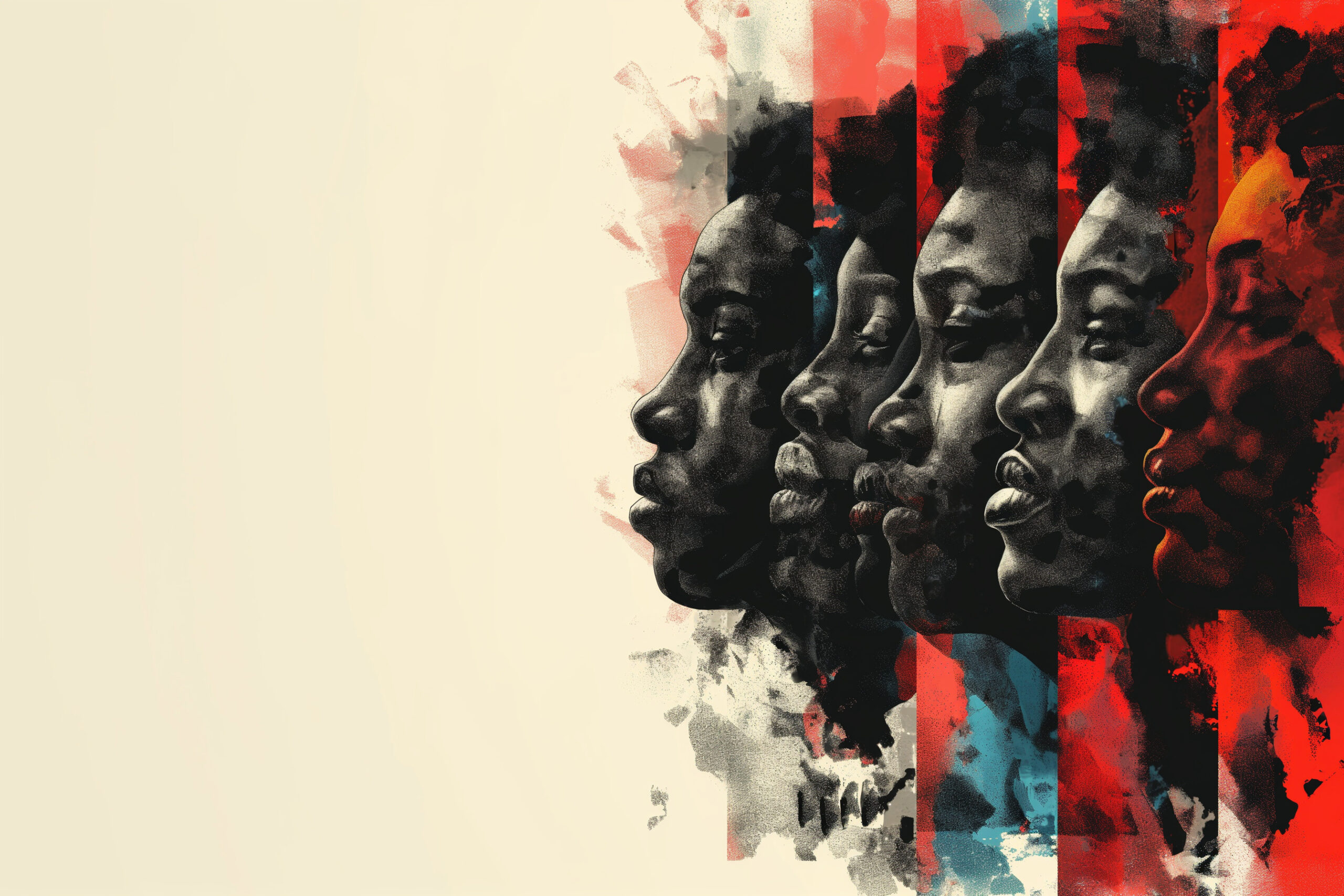
If you’re a non-Hispanic white, don’t get nervous. This article will not be a blame white America hit-piece. However, you’re certainly not off the hook. And if you’re a person of color (POC), you have a lot of work to do as well. As POCs, the role you and I play in bridging the racial divide will be just as significant as those in the majority group. Many whites, especially those with a conservative political bent, are uncomfortable revisiting a painful time in our nation’s blood-stained history. Slavery. Jim Crow. Civil rights. To them, going back does not equal forward progress. Valid point. But we must go back there so that freedom can be achieved right here — today in the opportunity diversity arena. Check this out. A lot of American blacks with ancestral ties to slavery still see themselves as foreigners in a land of limited opportunities. It’s hard to explain but quite easy to feel. That nagging sense to disconnect from any form of patriotic expression while reflecting on “the life, liberty, and pursuit of happiness” promise by our Founding Fathers. It seems that someone, something, or somewhere will remind us to get back in line when we step out of place. An insensitive comment (like the one I hear all the time, “Wow, I would have never guessed that you are a CFP.”) A distancing observation (such as this common phrase, “I don’t see color.”) An incredulous stare-down (along the lines of, “How did you people hear about this exclusive vacation spot?”) Covert racism is more insidious than the exploits of overt racists. As a black or brown individual, you’re often left holding the interpretation bag when an underhanded comment, off-the-wall observation, or judgmental stare-down misses the racial sensitivity mark. In 2024, this shouldn’t happen. Then again, it’s not that surprising.
When you see a need and don’t fulfill it, a lot of innocent people get hurt in the process.
It’s not what we, seasoned adults, have learned, those of us born between 1940 and 1980. But what our children and grandchildren have not learned — notably the integration of an opportunity diversity playbook to assist black and brown Americans on the fringes of society. Our two kids, Nyah and Eli, would often accompany Monya and I when our nonprofit organization offered empowerment programs to inner-city youth more than a decade ago. Though a minority, they witnessed firsthand how privileged their life was compared to other melanated children. Opportunity gets you to the door (which can be the result of color preference). Diversity of talent, work ethic, and competency keep it open. If we’re honest, two worlds exist in our black community. Those who have taken advantage of opportunities, a small minority. This group is often accepted, and in some cases, revered in mainstream society; they’ve been able to maximize and monetize a given skillset or engrained mindset. The other world? Those who are taken advantaged of by opportunists (which include gang-bangers, drug dealers, and “unity” peddlers who promote a common bond but cause internal rifts). This growing segment of the black population has struggled in finding and funding their value proposition in life, which has become an exhausting ordeal. Unfortunately, far too many of them just give up and live for the moment.
Nyah Funderburke is my oldest child. A college junior and communication’s major at Ohio State, she is blazing her own trail in the classroom and swimming pool as a dean’s list student, All Big Ten performer, and NCAA All-American swimmer. While fair complected, Nyah often blends in with her white teammates in the pool. Out of 75 male and female swimmers, she’s the only African American on the team. Very few black and brown swimmers compete at an elite level. Those who do, stand out. In high school, she shared this startling revelation with me. She said, “Daddy, my focus is to swim in lanes 4 or 5. When swimming in these lanes, the best lanes, you can impose your will on the other swimmers since the waves are pushed from the inside-out.” Fascinated, I asked, “What do you mean?” Nyah responded, “Those on the outside lanes, 1 and 8, have the toughest time. They’re in the worst swim lanes and must contend with the waves coming from the middle lanes and off the wall ….” I interrupted, “Wait, you can still win — your room for error is incredibly small, though.” She chimed in, “That’s right Daddy, just like the people you and Mommy help through LFYO. They may not see the waves, but eventually they’ll get so tired fighting against them.” Hmmm, the waves of injustice. Her assessment at sixteen was refreshing. Same pool, different race. Life outcomes (and swim results) will largely depend on a person’s lane assignment. Today, Nyah’s vantage point on race in America has broaden as a young adult. Last summer’s visit to Selma, Alabama, to march alongside other black and brown Big Ten athletes on the Edmund Pettus Bridge transformed her thinking on opportunity justice. Click the link below to watch Nyah’s Big Ten Network feature, which aired on February 9th. You can visit her website at www.NyahFunderburke.com.
Giving Back So Others Can Start Moving Forward
Year In Review –– 2023
Giving Back So Others Can Start Moving Forward
Monya and I want to thank LFYO supporters, partners, and board members who made 2023 a year to remember. More than 750 at-risk individuals were impacted by our programs, workshops, and camps. From personal branding to job skills readiness to financial fitness, participants were given the game plan to achieve better life prospects and legacy pathways through cutting-edge offerings. Every innovative app and sensory-based tool is created in-house to make learning an inviting and empowering experience. For our efforts, LFYO was the recipient of Mahogany Columbus’ Central Ohio’s Outstanding Community Leader Award.
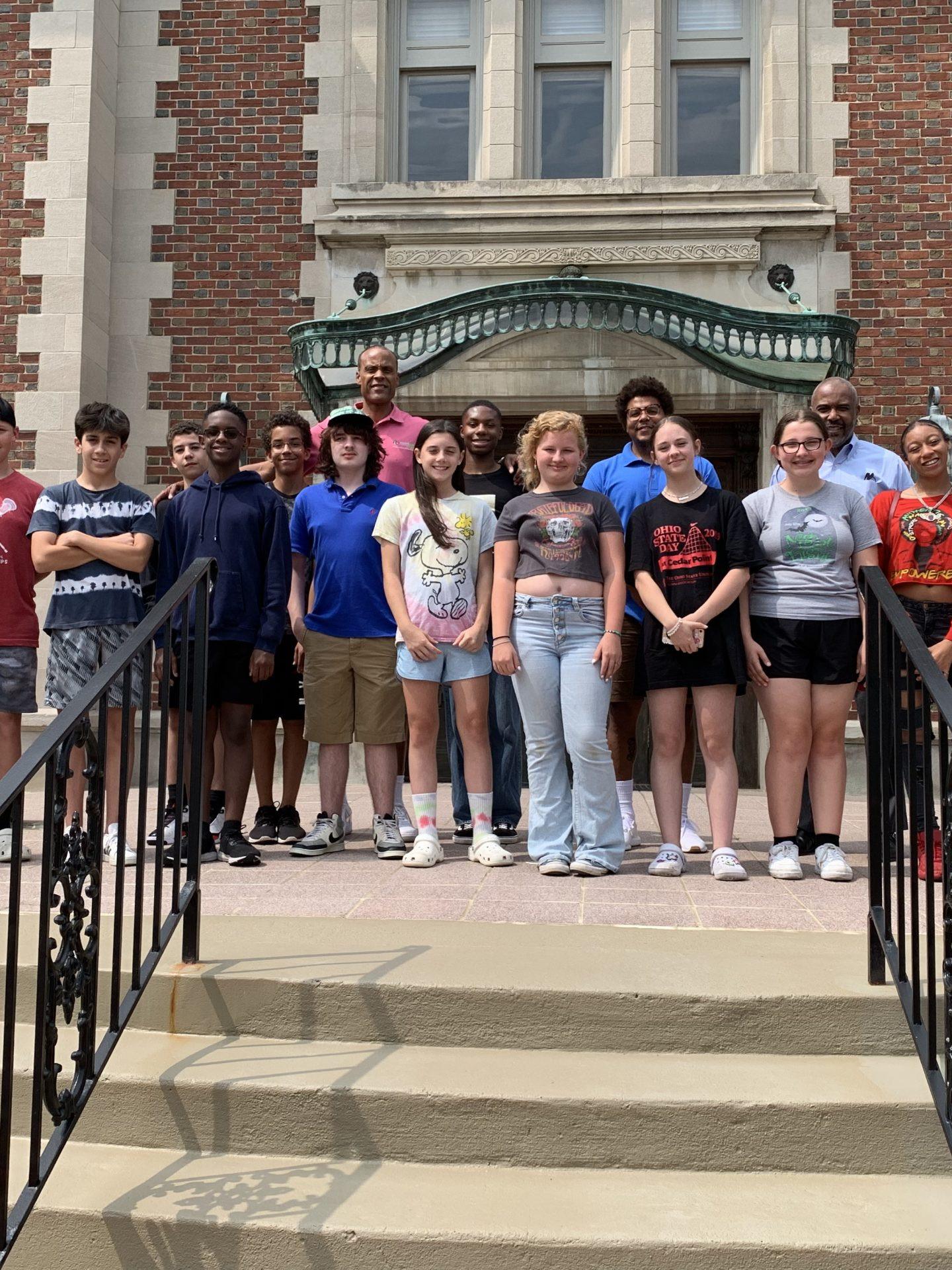
The Columbus Foundation
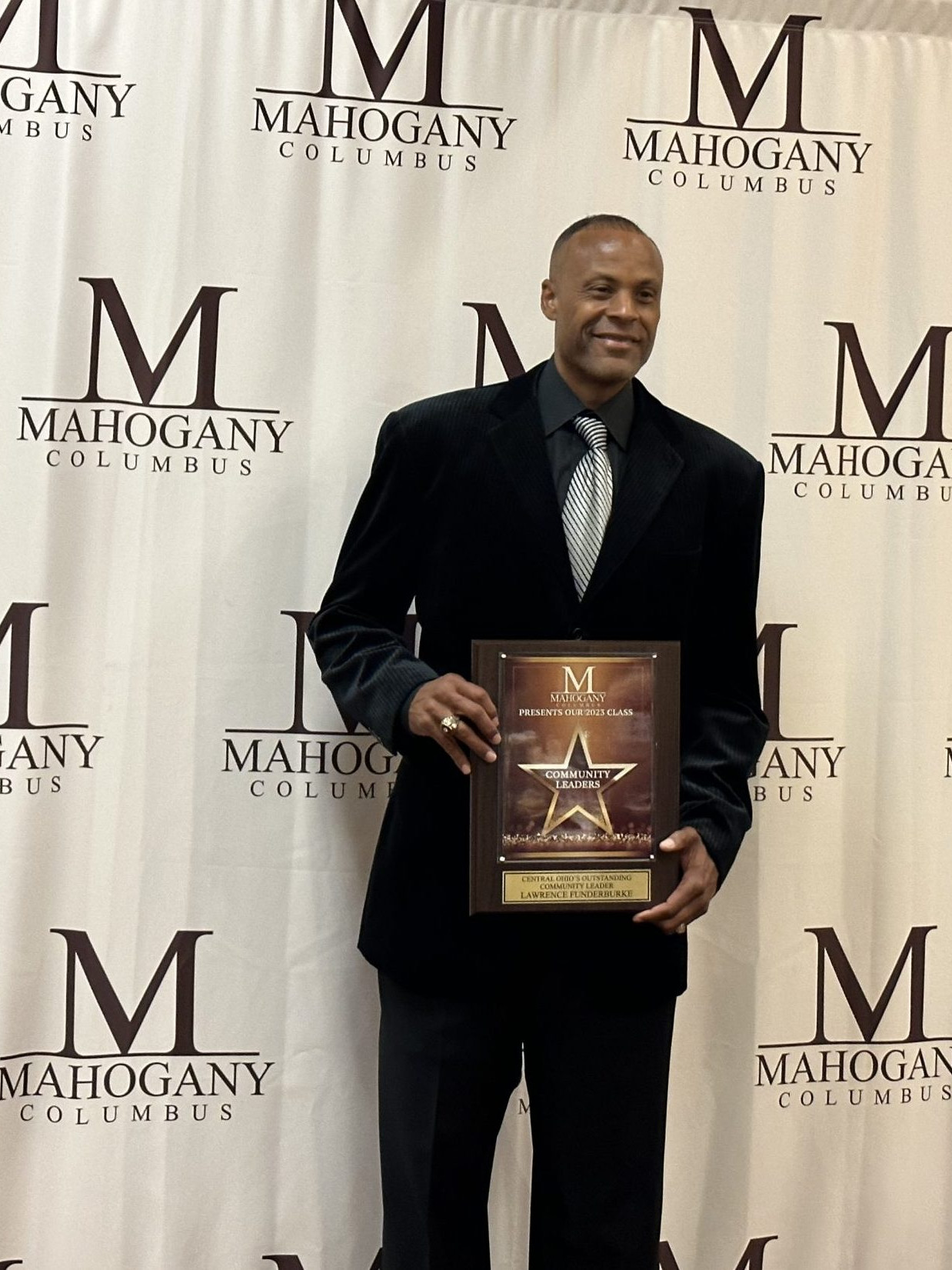
Central Ohio’s Outstanding Community Leader Award
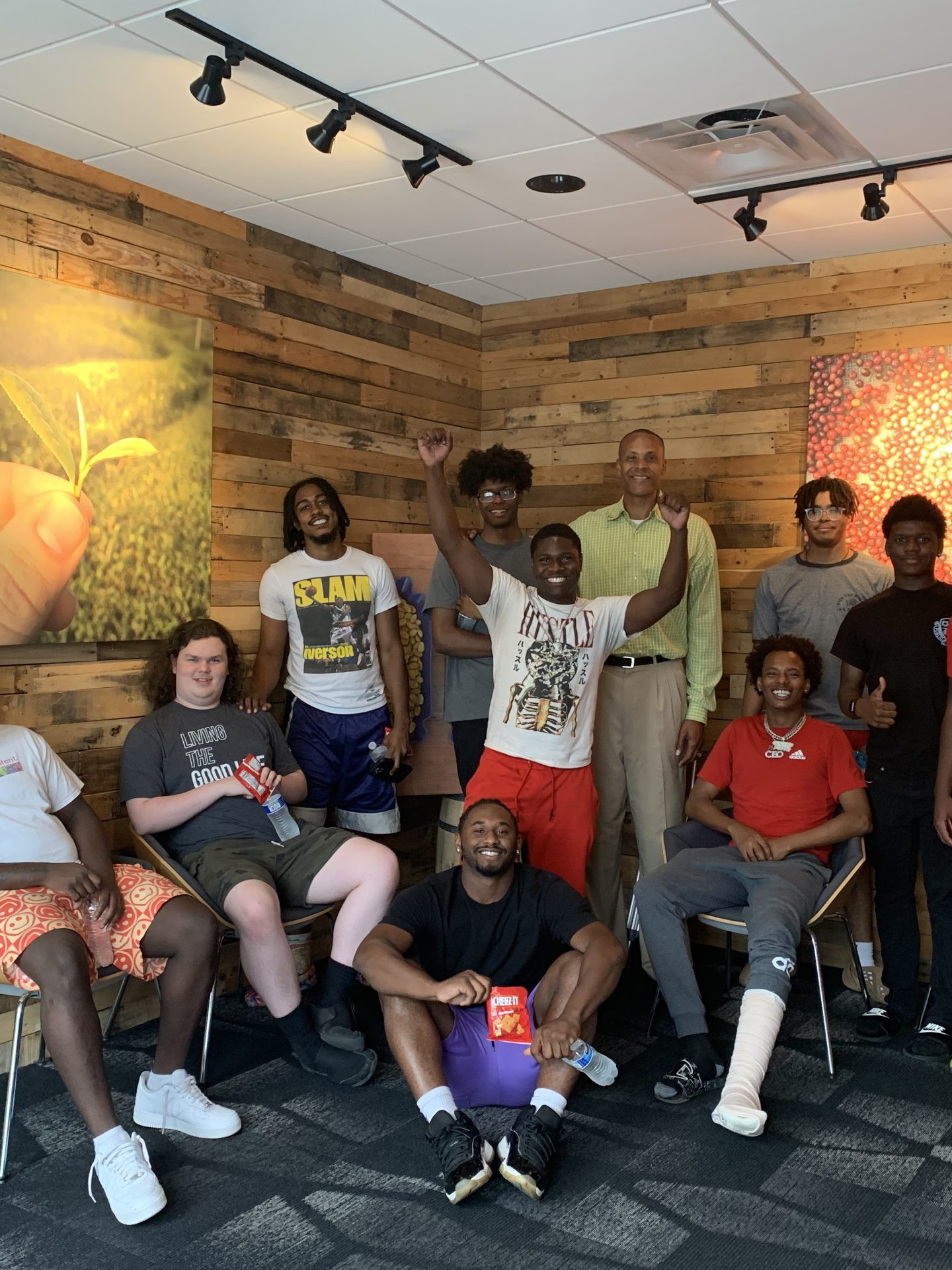
Crimson Cup Coffee Headquarters
2023 LFYO Fundraising Luncheon
The 2023 LFYO Fundraising Luncheon on September 15th at Hyde Park Prime Steakhouse was spectacular. The beautiful weather. The first-class service. The heartwarming atmosphere. Attendees were treated to scrumptious appetizers, a steak-chicken-and-salmon trio, and a delectable dessert combo. Speakers shared insights that resonated on a number of fronts, most notably how to make a lasting difference in helping vulnerable males reach outlier status as statistical anomalies. As Clark Kellogg and Gene Smith highlighted in their riveting speeches, Buckeye Nation is a family of caring souls and equally generous hearts.
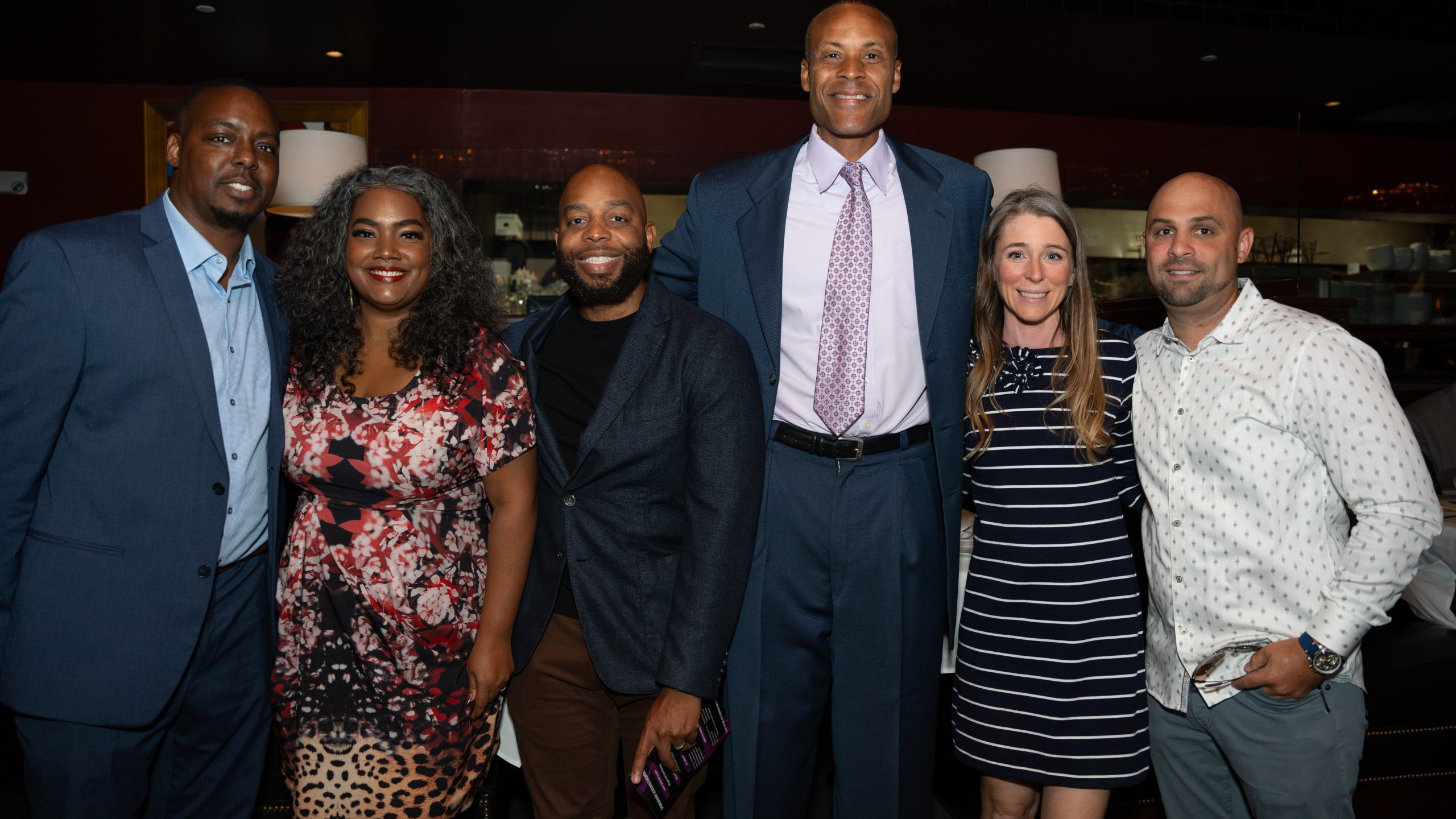
All-Star Sponsor Lindsey and Jacob Osborn (far right)
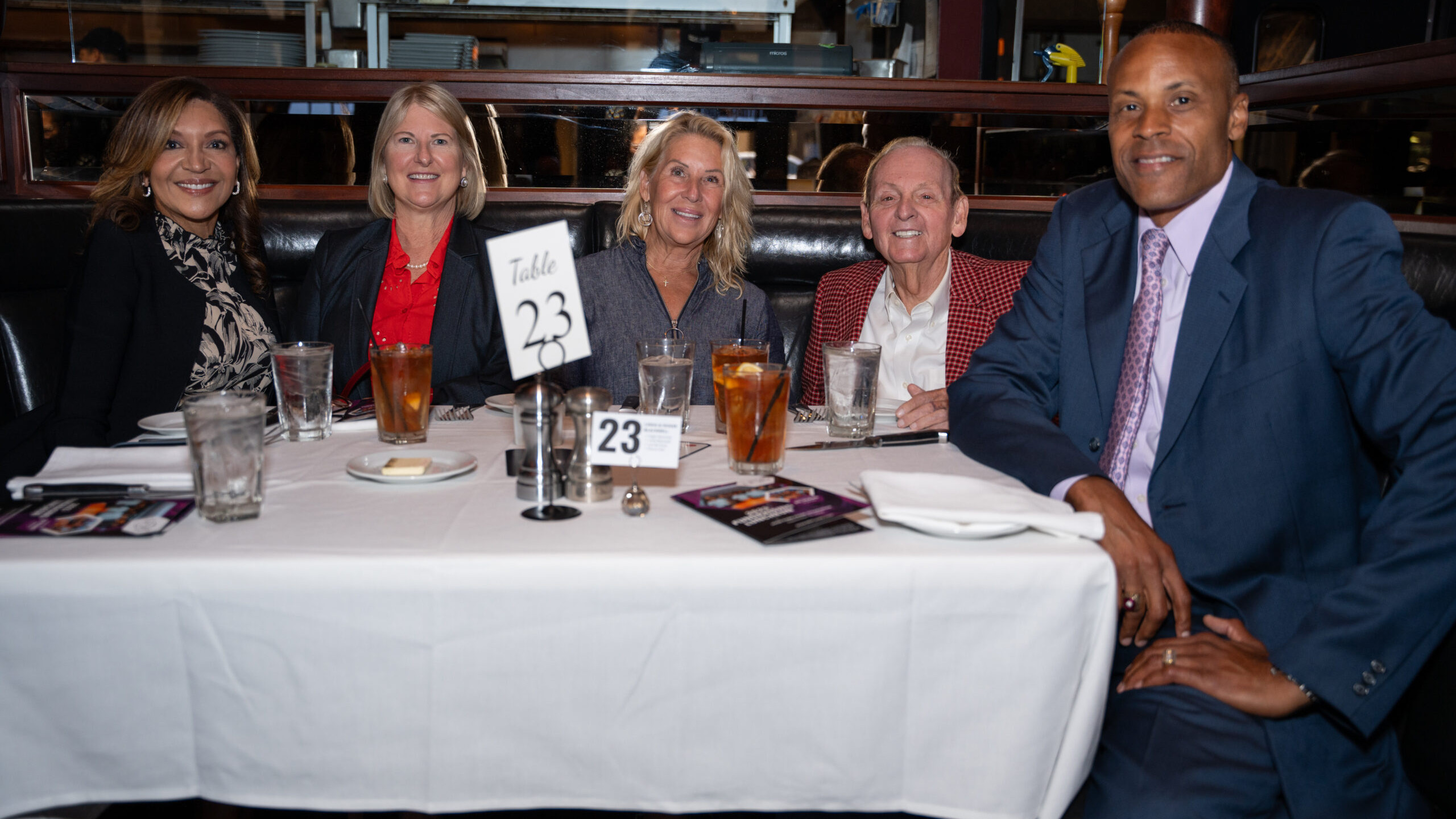
All-Star Sponsor Linda and Roger Blackwell (center right)
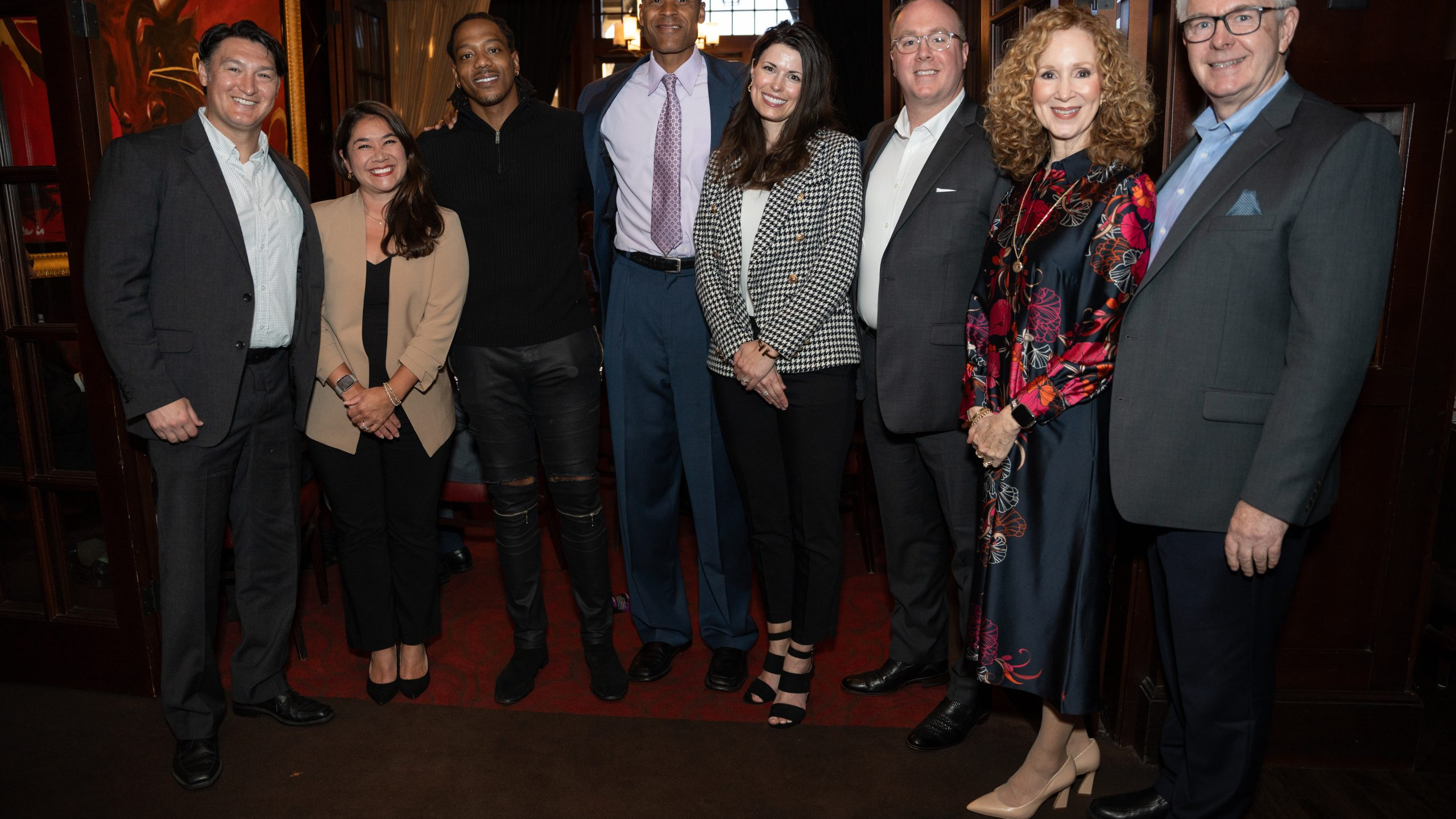
All-Star Sponsor Rebecca and Brandon McAllister (center right)
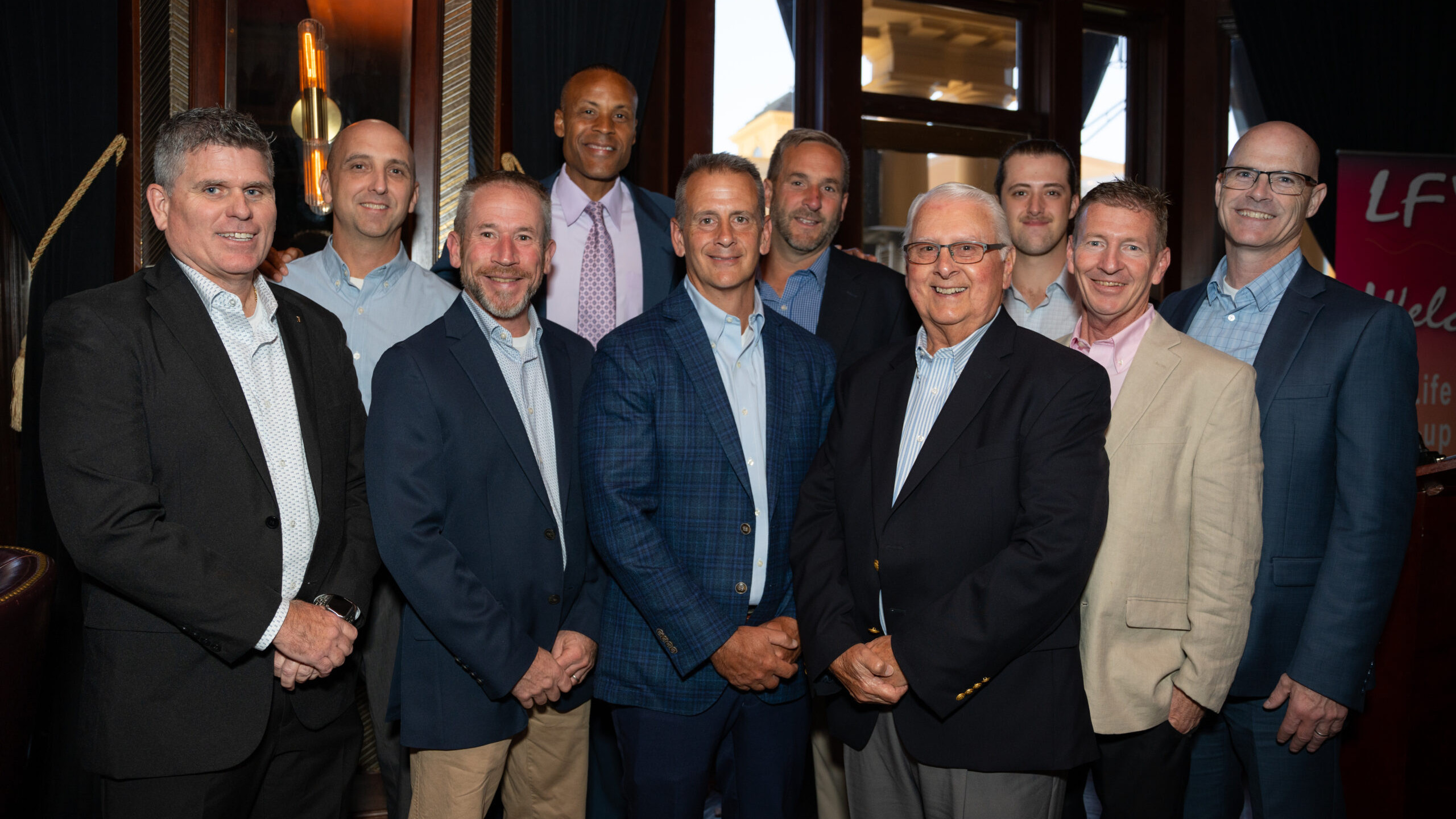
Legacy Sponsor Tom Fleming with Guests (front row center)
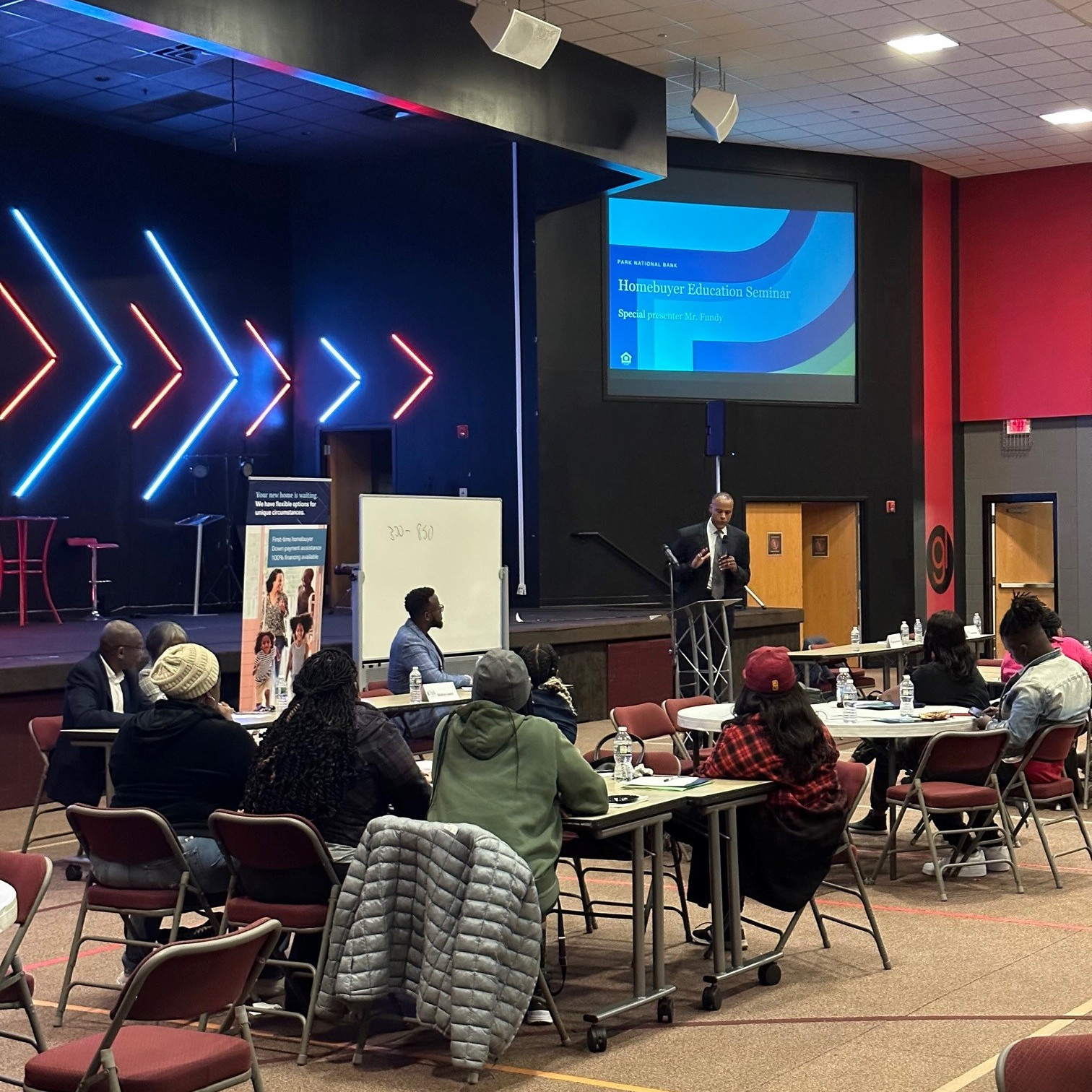
First Church of God
In partnership with The GoodLife Foundation and Park National Bank, we hosted a homeownership and economic empowerment workshop for underserved communities on November 9th.
Holiday Generosity
The holidays offer us a time to (re)connect with family and close friends. They also provide us with the privilege of helping those most in need. We want to recognize the Fahlgren family for blessing Cinnamon, a single mother of five, with groceries and Christmas presents. Tears swelled in Cinnamon’s eyes as she watched her youngest child, an adorable three-year-old, grin from ear to ear with excitement. One trip after another, the gifts kept pouring in as the Fahlgrens retrieved more and more goodies from their jam-packed vehicle. John Fahlgren is an LFYO partner and the owner of Sow Plated. Located in Upper Arlington, this is our favorite restaurant in Central Ohio. Great Food = Good Mood!


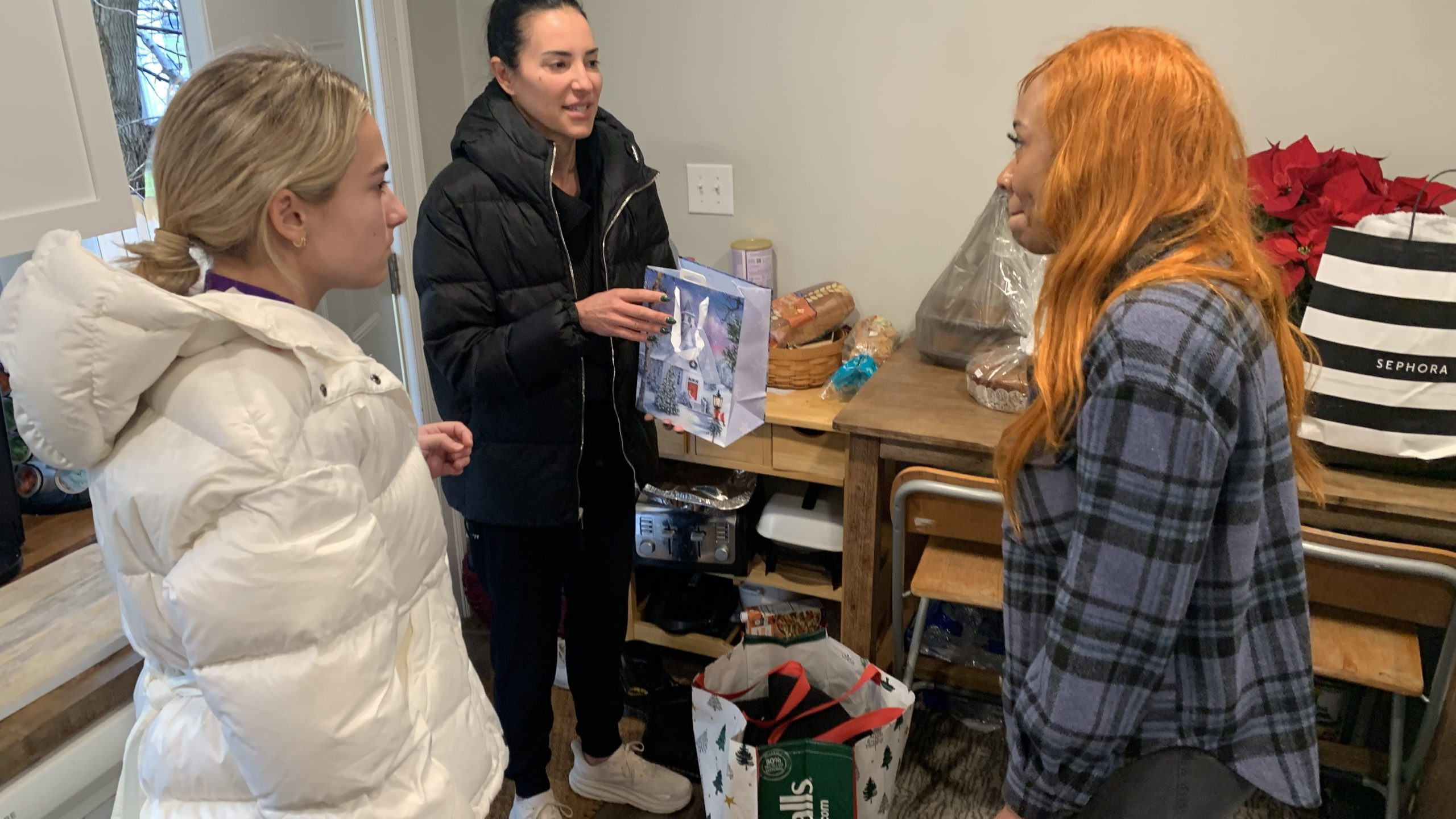
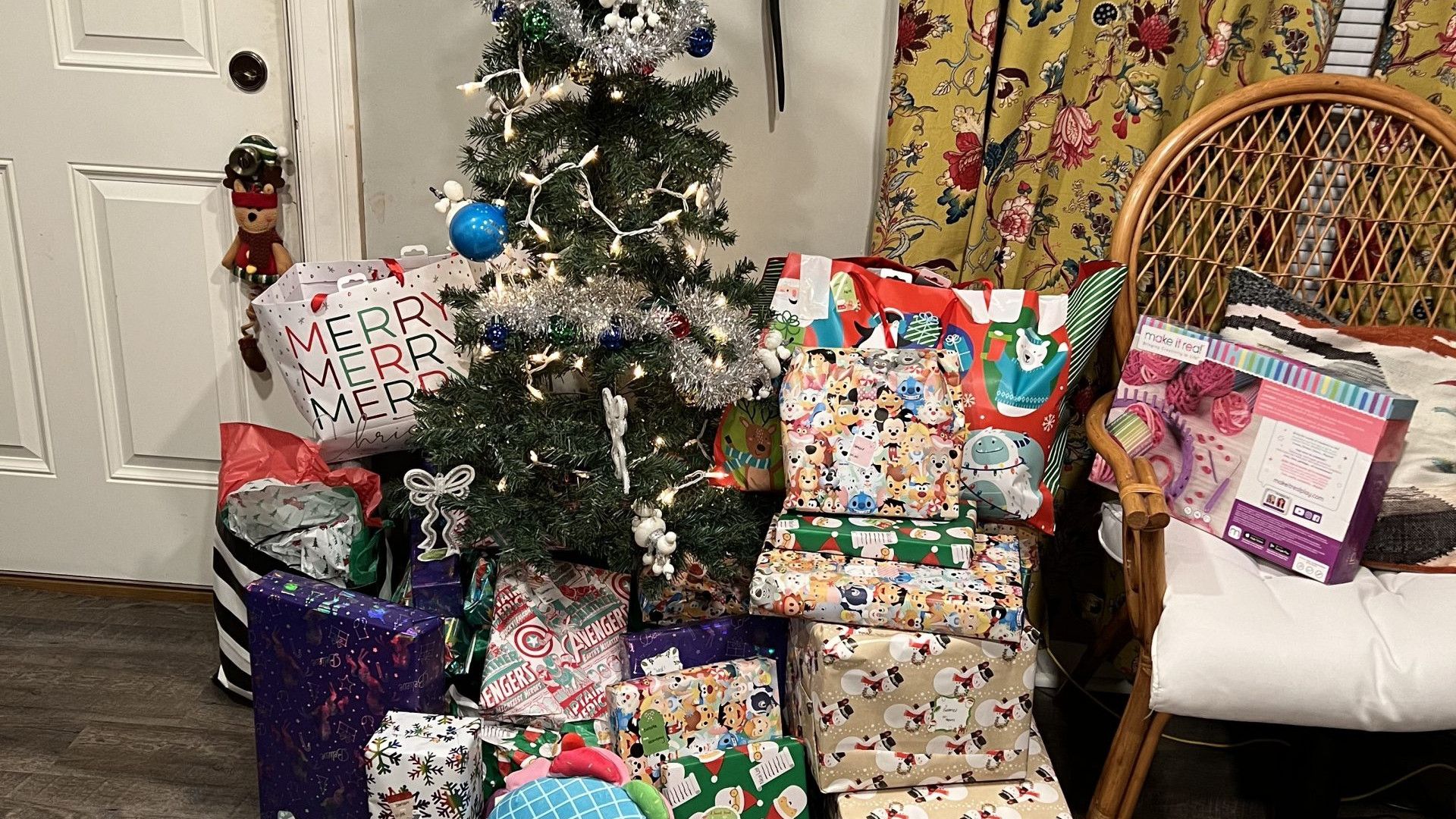
NBA Basketball Experience
Lastly, let’s talk basketball. Tom Warner was the auction winner of The Cleveland Sports Package at our fundraising event, which included a four-course dinner at five-star Morton’s Steakhouse and lower-bowl tickets to watch the Cavs play the New Orleans Pelicans on December 21st. Cavs legend, Campy Russell, donated the tickets; our seats were five rows behind the Pelicans bench. (Included in the photos are Tom, his son Grant, me, and my son Eli.)
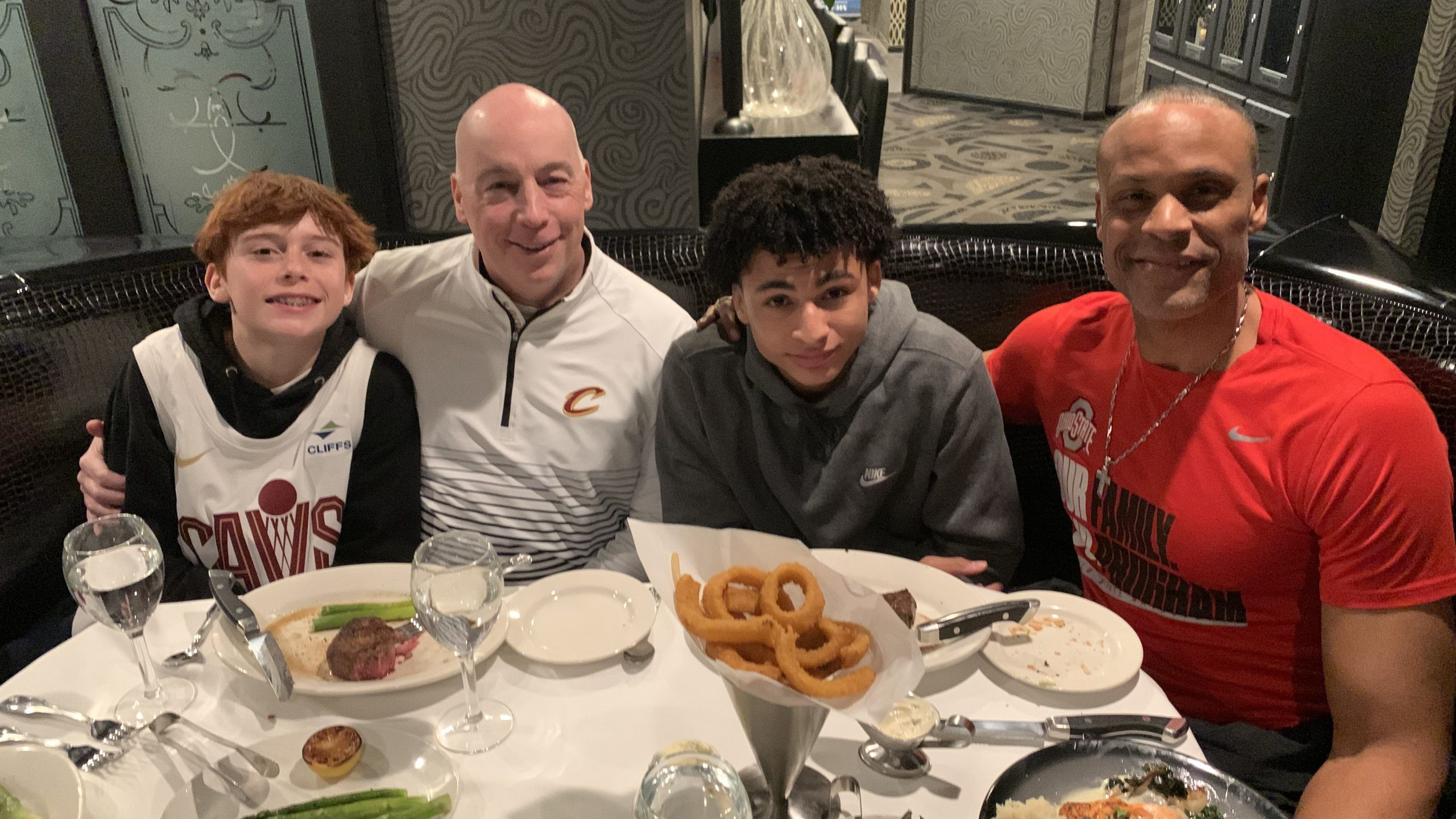
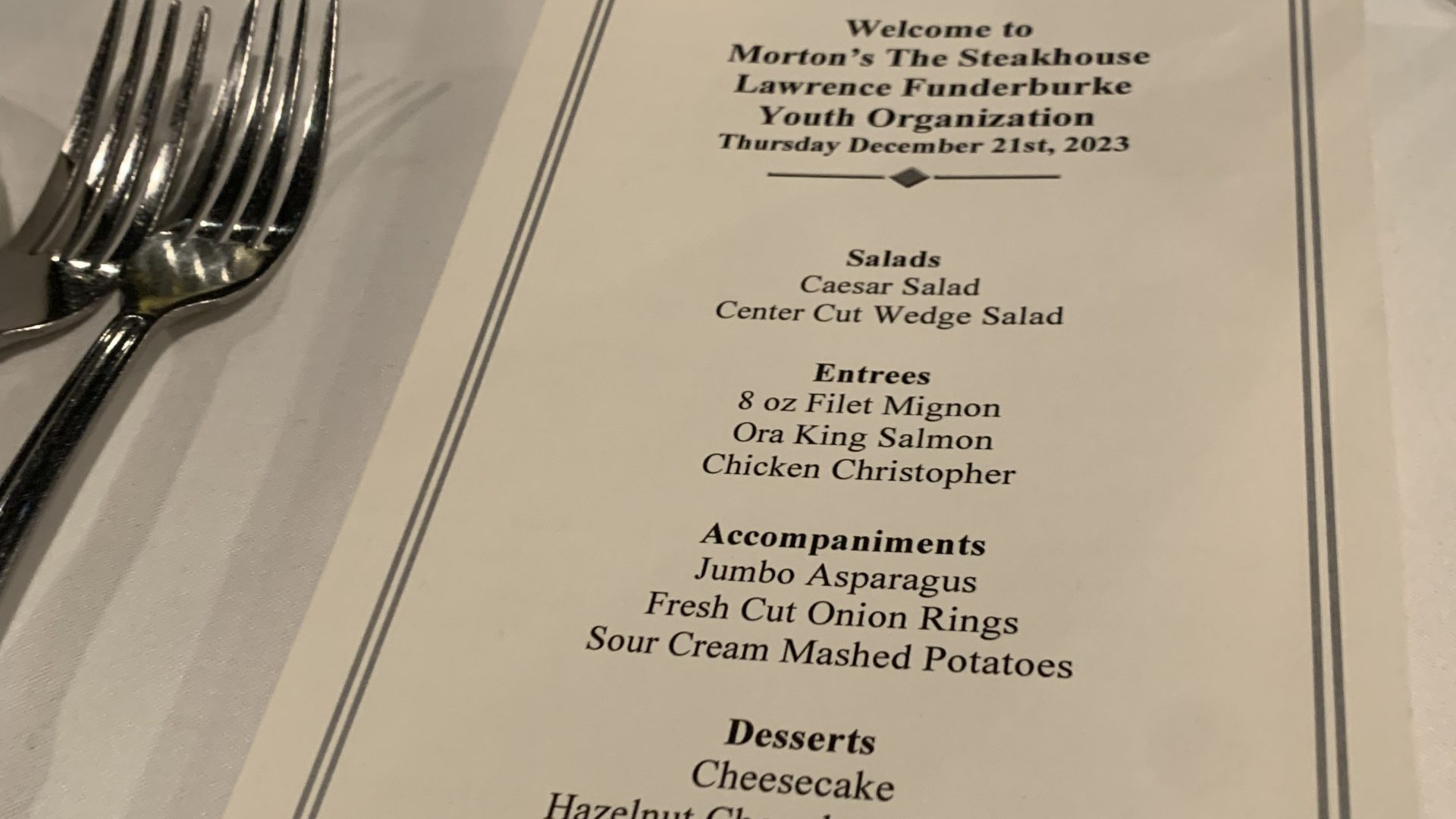
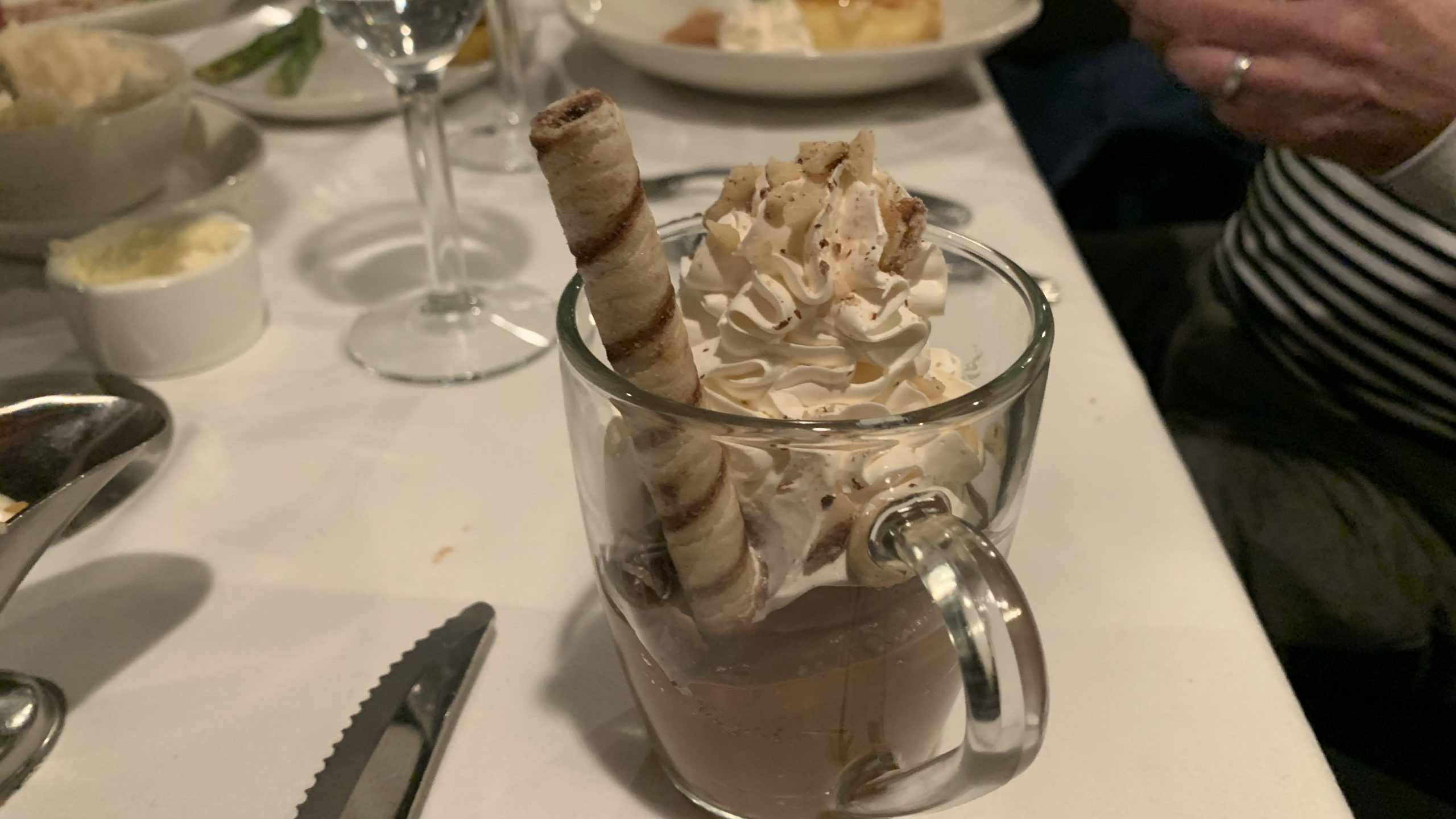
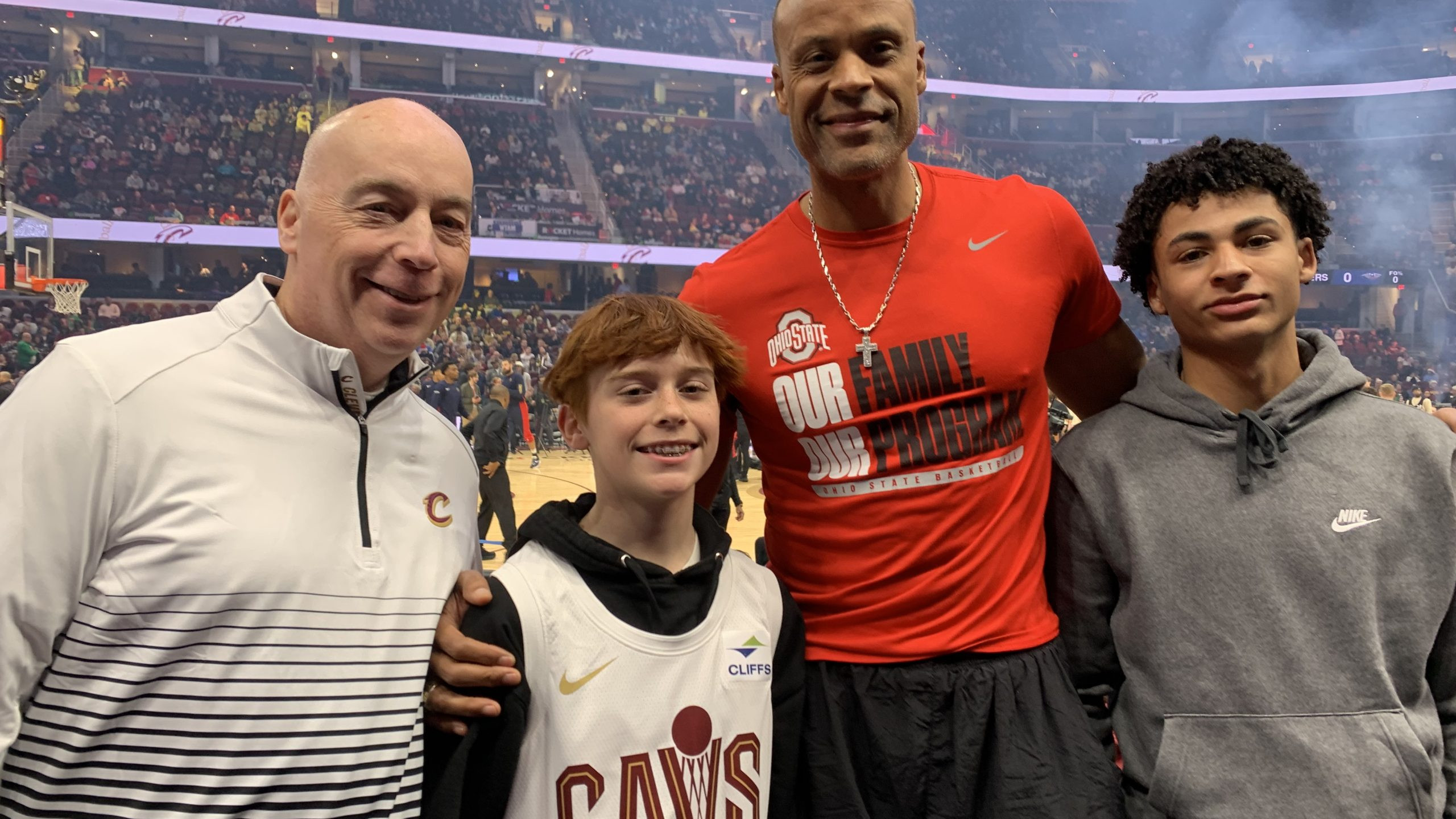
High School Basketball and Mentoring Program
The year ended with the launching of LFYO’s new initiative, The Mr. Fundy’s Mentoring Playbook for Youth and Young Adults. Mentoring concepts are crystallized through basketball terminology. Monya and I presented three workshops for the coaching staff and varsity boys basketball teams at Hartley, Walnut Ridge, and Africentric, respectively. Players were fed a deliciously healthy meal, shown how to identify and articulate their personal brand, and given the template for lifelong success as outlined in our mentoring playbook poster. I’ll share more insights on mentoring in a five-part series throughout this month. January is National Mentoring Month. Time for you-me-us to step up our influence game personally, professionally, and philanthropically.
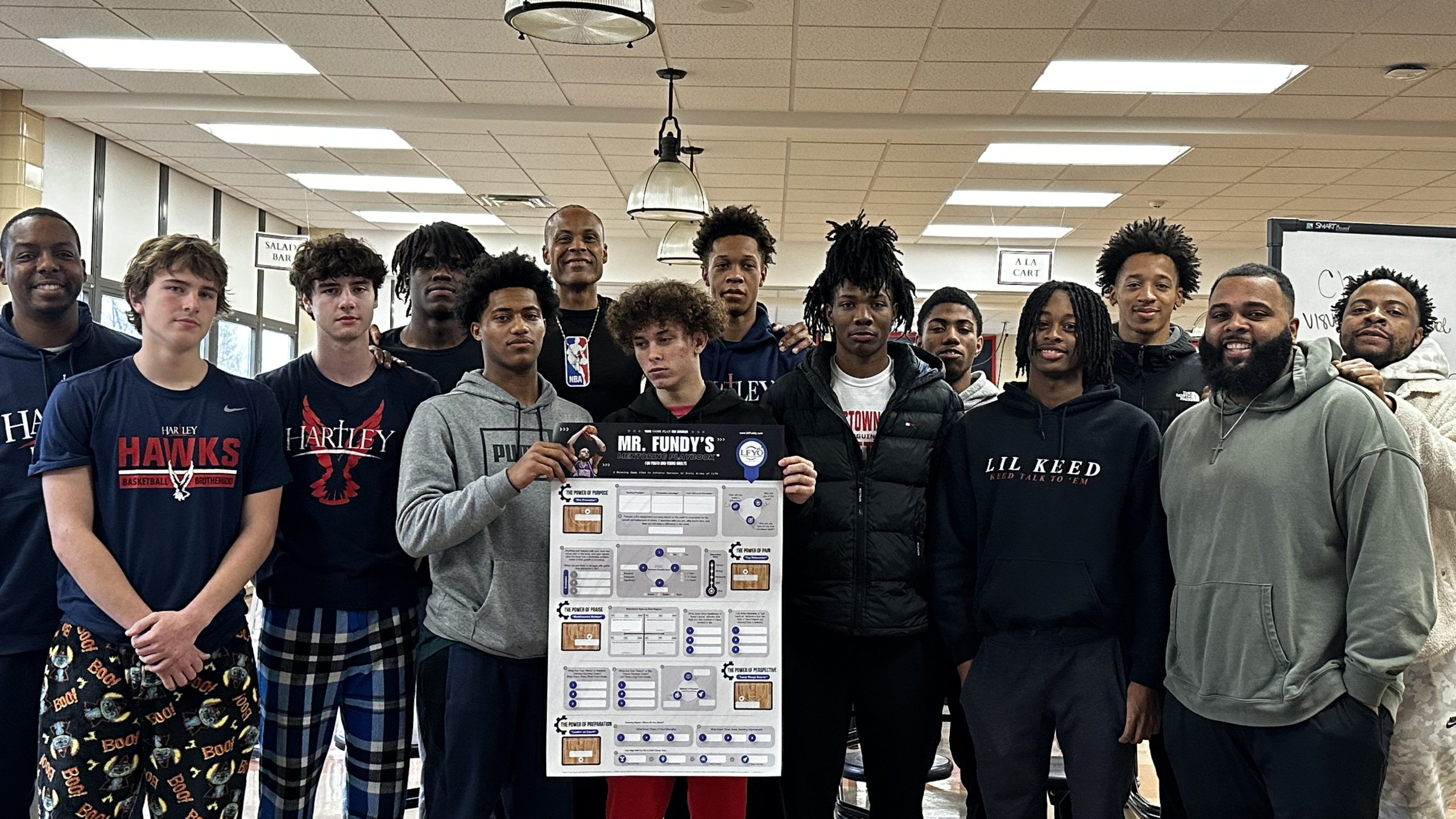
Bishop Hartley Varsity Boys Basketball
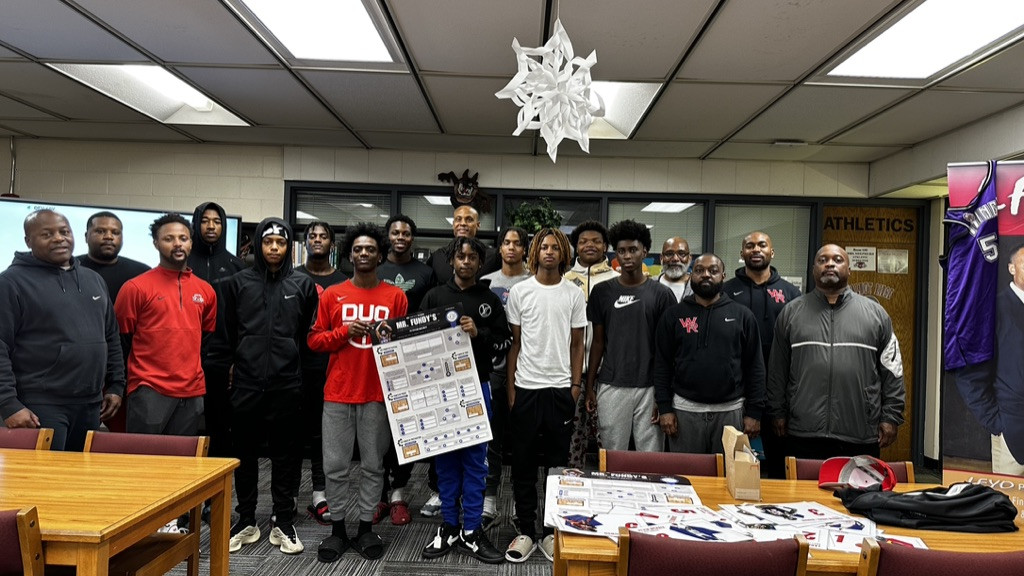
Walnut Ridge Varsity Boys Basketball
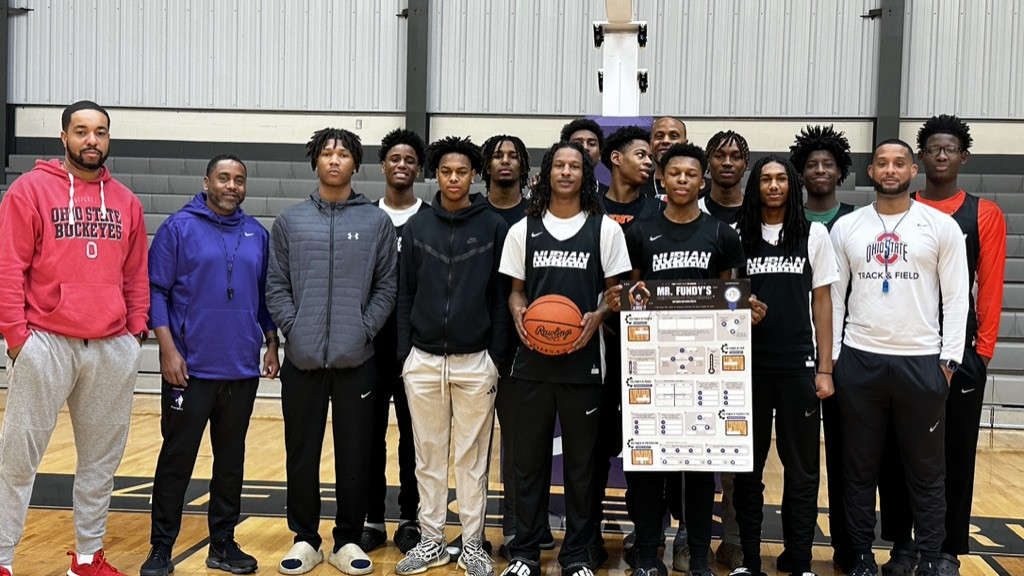
Africentric Varsity Boys Basketball
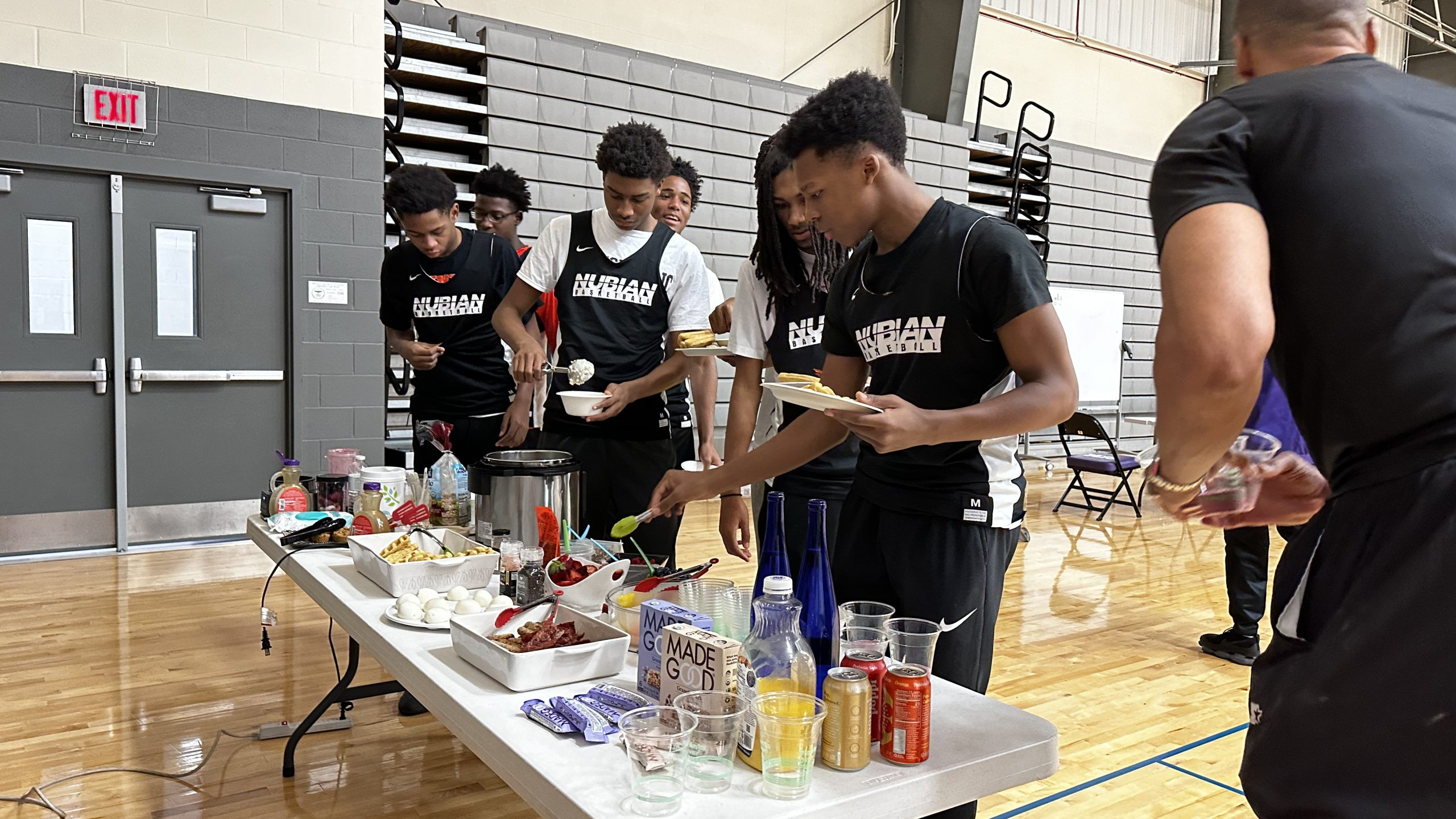
Deliciously Healthy Brunch
With your support, we can continue to make a real difference in the lives and legacies of vulnerable communities
The Power of Mentoring – Giving Tuesday
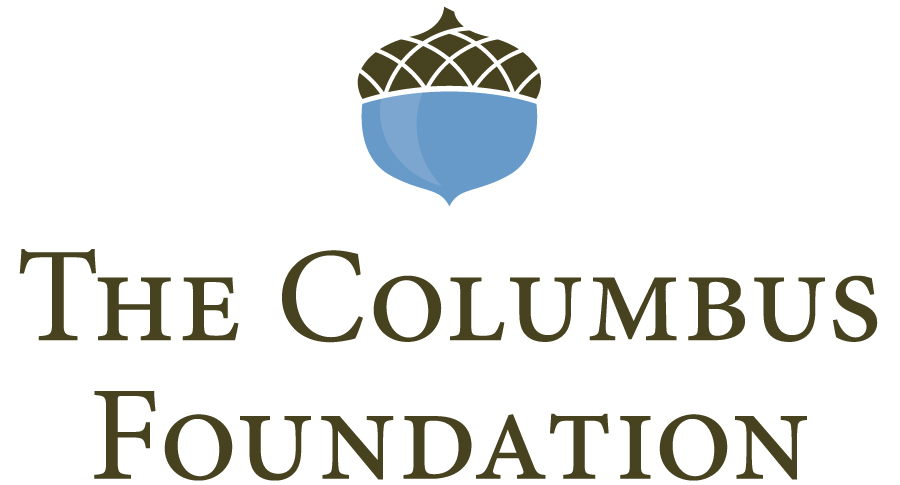
Giving Tuesday
November 28, 2023
The Power of Mentoring
How an Attitude of Gratitude Can Transform Our Central Ohio Community
Giving Tuesday is one week away, a global movement with local momentum to change lives and transform legacies. Here’s where your help comes into play with a much-needed assist. On Tuesday, November 28, The Columbus Foundation will cover all fees for gifts made by credit card through The Giving Store to support the Lawrence Funderburke Youth Organization. So, 100% of EVERY tax-deductible donation made on this date through The Columbus Foundation will go directly to LFYO!
Outside of a parent or family member, who has had the biggest influence in your life personally, professionally, or philanthropically? It’s probably safe to say that this person or group has served as a trusted mentor, a relatable and reliable tour guide with a proven track record in producing verifiable results in your life. Without this guidance-counselor relationship and success GPS system, where would you be? Now, imagine what life is like for at-risk youth who have been shortchanged from birth to adolescence in the area of effective mentoring. I’m not making excuses, but these young people are likely going to take their pain out on others, or themselves, or take matters into their own hands (a la Kia Boys) to navigate their brutal existence. And a young mind is ill-equipped to carry this burden alone.
We fell short of our $250,000 goal in raising funds at our 2023 LFYO Fundraising Luncheon by $100,000. We’re still hopeful that we can achieve our capital objectives by year’s end. Why? Because you’re assist, really investment, will help us serve over 5,000 participants through the Mr. Fundy’s Mentoring Playbook for At-Risk Youth and Vulnerable Young Adults. In fact, some of the mentees will serve as peer-to-peer mentors and receive compensation for their efforts. Money can act as an incentive, but development activates the real reward.
In closing, peer-to-peer mentoring, or what I term, horizontal influencing, is about the village elevating the village. This can occur by pushing, pulling, or propelling each other across the success finish line. Adults can serve as facilitators of youth-led change, but the workload rests with the initiators of transformation — peers who look, think, and act like them. Yes, we can provide the appropriate guidance and applicable guardrails, but grown folk need to step aside and let our young people get in success shape through peer-to-peer coaching, conditioning, and cheerleading measures. And the life and legacy game, theirs and ours, is truly on the line. (The Mr. Fundy’s Mentoring Playbook for At-Risk Youth and Vulnerable Young Adults has been praised by Zack Klein, Columbus City Attorney.)
Thank you for your time, talents, and treasures as LFYO difference-makers and philanthropy mentors!
Click the button below to help us reach our year-end fundraising goal through The Columbus Foundation Giving Store.
Chillicothe Wellness Workshop
Chillicothe Wellness Workshop
In Appalachia Ohio, 10 percent of the population are people of color, and yet, this demographic only receives 3 to 4 percent of the outreach dollars to impact this vulnerable area of the state. In partnership with the African American Community Fund, which exclusively serves Appalachia Ohio, LFYO presented a four-hour wealth and health workshop for black and brown Chillicothians on August 12th. Given the fact that my wife Monya grew up there as a child, this place is near and dear to my heart. Like so many southern Ohio towns, Chillicothe has seen its middle-class lifestyle become more and more constrained by factors outside and inside their control. They’ve also watched their most marketable quality — a rock-solid work ethic — result in less and less residual benefits. Blue-collar jobs lost in the 1980s due to global outsourcing forces to produce cheaper products at lower wages was the unfortunate catalyst. The resulting fatherless crisis (driven by purposeless adult males), drug dependency epidemic, and overall hopelessness have crippled the region. It’s a tale of two vastly different worlds. A shrinking minority have capitalized on an oasis of opportunities as risk-seeking entrepreneurs, real estate investors, and revered philanthropists. The expanding majority view life as one painful voyage with little hope for a promising future but full of legacy-altering, coulda-woulda-shoulda regrets. To most Appalachia Ohio residents, their opportunity glass is always half empty.
Our empowerment goals were clear-cut throughout the wellness workshop. Teach participants the language, lingo, and labeling of wealth and health through sensory-based approaches. All three — language, lingo, and labeling — embrace personal discomfort. Of course, no growth can occur without an upgraded mindset. An individual’s expectation of the future changes when exposure and experience are both transformed in the present. And it’s hard to get someone excited about a future that hasn’t been seen before. Thus, we familiarized participants with the investment world, a key pillar of a well-constructed financial plan. Investing is arguably the biggest stumbling block for any racial demographic, especially those who suffer from “math anxiety.” Investing in math is complex, but it doesn’t have to be complicated. Of course, it can serve as a compound interest friend or foe. (The bulk of the workshop was spent on investing. Typically, blue-collar communities instinctively understand the basics of personal or family finance — live below your means, avoid unnecessary debt, and maintain a respectable credit score. But most middle-class households in rural Ohio know very little about the stock market, even when working for recognizable, publicly traded companies.)
First up was The Portfolio Management Game, one of our signature learning modalities to bridge the growing and glowing opportunity divide in America. This PDF app crystallizes the world of investing in a language that’s relatable, palatable, and sustainable to every social class group. Each player is given $1,000,000 to invest in various investment options, including cash/cash equivalents, stocks, bonds, mutual funds, index and exchanged traded funds, private equity, and hedge funds. At the onset, though, an analysis of one’s risk tolerance and financial goals serve as key drivers of portfolio construction decisions. Participants must wait with bated breath as they watch how global economic factors and conditions impact — positively or negatively — their million-dollar portfolios on a macro level through four scenarios. Of course, taxes, inflation, diversification, and asset allocation are additional considerations of this real-world, simulated game.
The Portfolio Management Game was the perfect segue into the Mr. Fundy’s Stock Pro Game, a hypothetical investment game with both macro and micro components. Participants assessed the dynamics of large-cap, mid-cap, and small-cap stocks from a value-investing perspective. Each participant was given $1,000,000 to invest in five companies, which consisted of 10 large cap, 5 mid cap, and 5 trim cap options. From banks to airliners to software developers to clothing and apparel manufacturers as well as other industry categories, participants admitted that selections were made based on their “familiarity profile” — what they knew, who they trusted, and how they shopped in terms of products and services. Key metrics in the Mr. Fundy’s Stock Pro Game included earnings per share (or EPS), price-to-earnings ratio (or P/E ratio), dividend yield, return on assets (or ROA), and return on equity (or ROE). They were shown how to calculate market share (stock price x # of shares outstanding). Also, participants were taught how to find the missing variable in an algebraic equation when two out of three variables are known. For example, if earnings per share and number of shares are stated, then total earnings or net income can be found through deductive reasoning.
As a race, we’re behind the ball financially. And not much has changed for our wealth picture since The Emancipation Proclamation of 1865, which supposedly set us free. Blacks spend more money on food, clothing, and entertainment than any other ethnic group. What we touch as loyal consumers, we usually buy based on how it’ll make us feel. Who we wear regarding designer labels, in our minds, plays a large role in how we’re viewed, accepted, or denigrated in the eyes of others. Where we find laughter and enjoyment, is how we escape from our real or imaginary pain. As U.S. congresswoman Joyce Beatty once shared with me several years ago, “We, black folks, need to be on both sides of the cash register.” It’s time for us to break free from what holds us back as a people — feeling a certain way before we do a certain thing. Feelings can serve as a barometer, but they inevitably make a terrible guide. In the last hour of the workshop before Chef Jim Warner’s cooking demo, rule-of-thumb averages were highlighted in the five areas of comprehensive financial planning using a case study as the backdrop: life planning, financial management, investment planning, income and asset protection, and estate planning. (In general, it takes a minimum of 20 hours of intensive training to construct a viable foundation in personal or family finance. And scaffolding attributes to accumulate, protect, and distribute legacy wealth involve countless hours more.)
Chef Jim Warner wrapped up the workshop with a stellar presentation on healthy eating. Over the years, he has prepared meals for Kirk Herbstreit, Joey Galloway, Michael Redd, “Beanie” Wells, and yours truly. He discussed the important role nutrition can play in the lives and legacies of those who prioritize wholesome eating. Yes, it’s a matter of life or death every time we sit down to eat. Real food helps us think better, feel better, and do better. Warner highlighted, “Start today by making small changes in what you eat and drink.” He added, “Pay the price now so that you can reap the rewards later.” Every delicious food item prepared by Chef Warner was gluten-free, GMO-free, dairy-free, additive-free, soy-free, and pork-free (but not taste-free). Organic foods may cost more, but the benefits far exceed conventional alternatives. Even on a limited budget, quantity and quality of life are greatly improved when consuming foods that are good for the brain, belly, and body. Pay now, play later. Or, play now and pay later. Doesn’t matter if it’s our wealth condition or health status.
